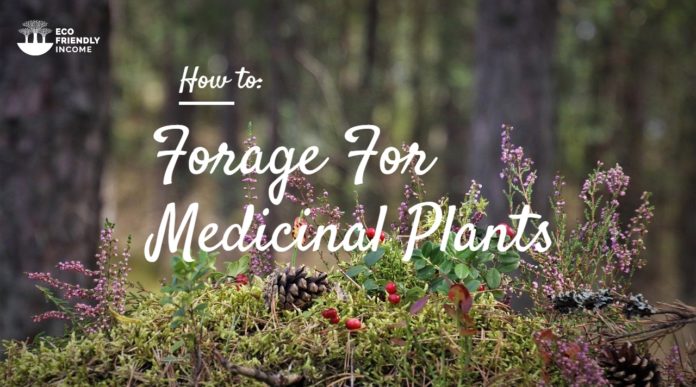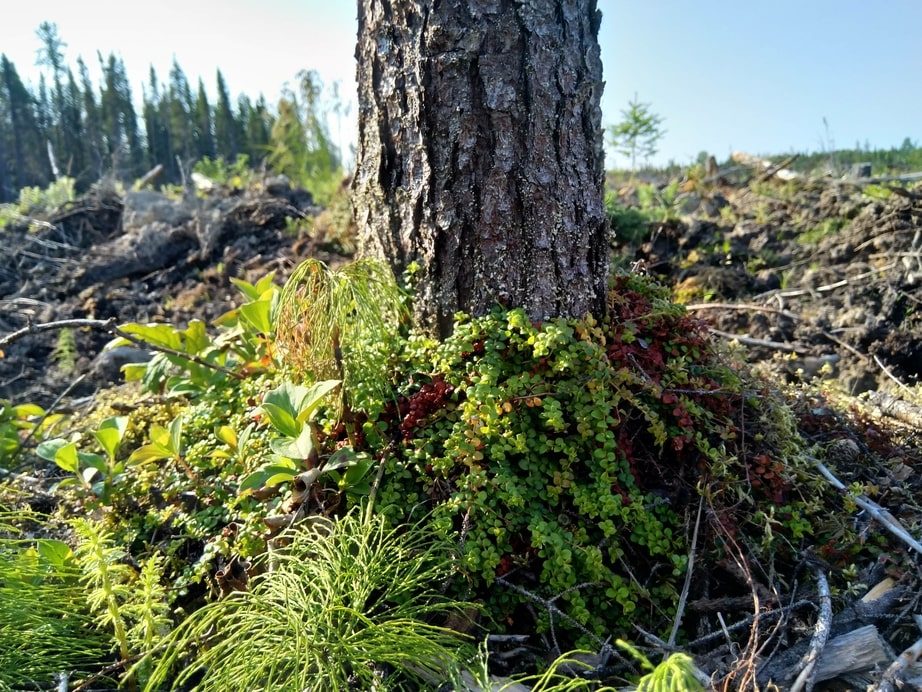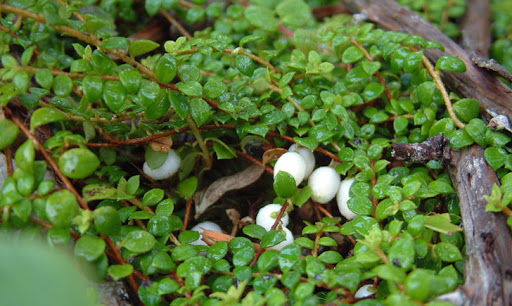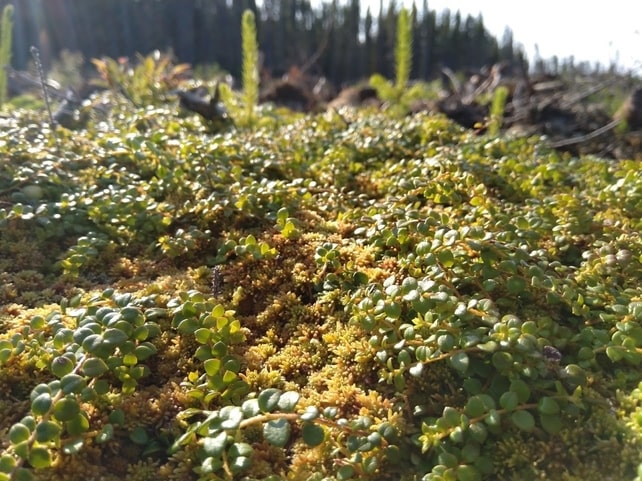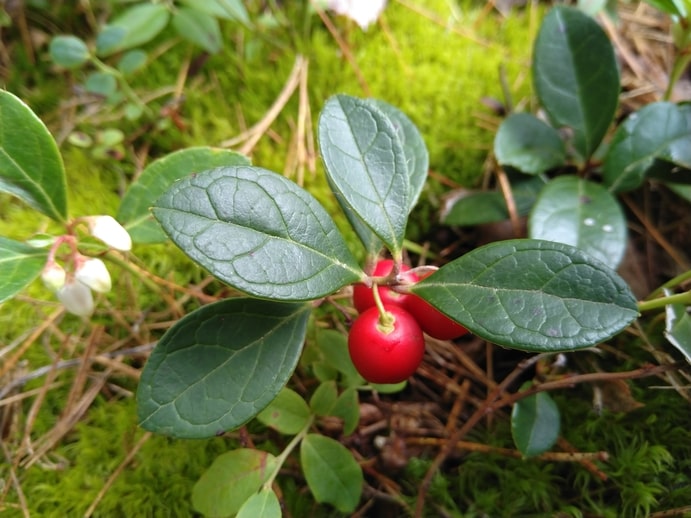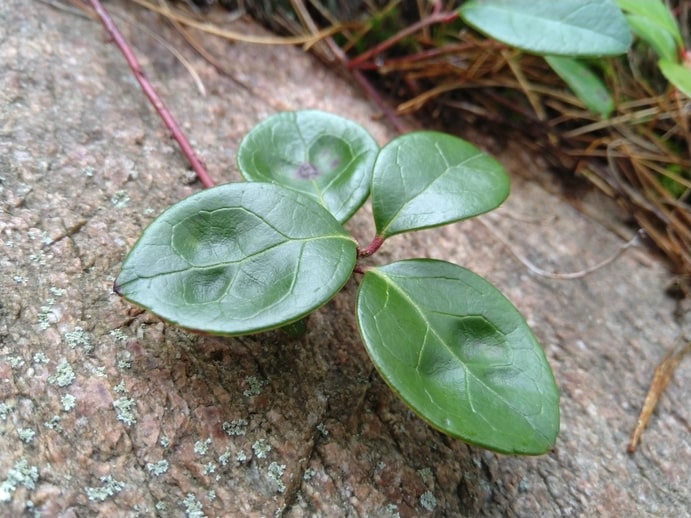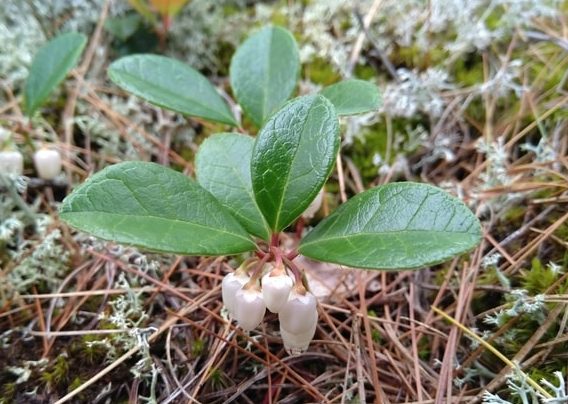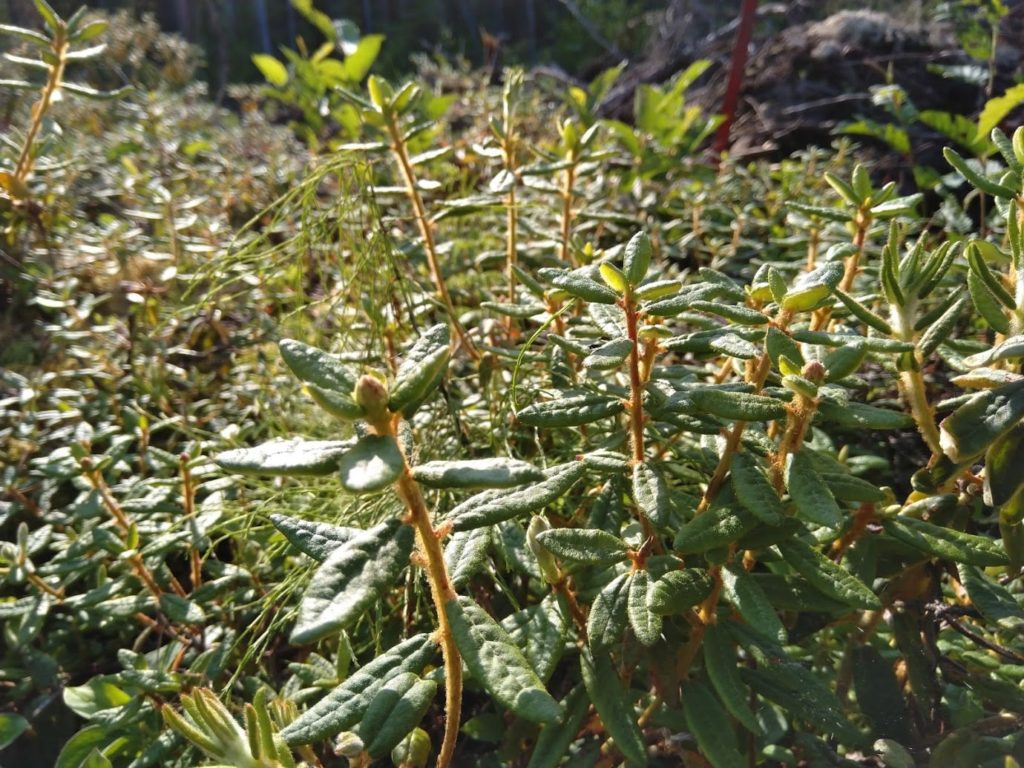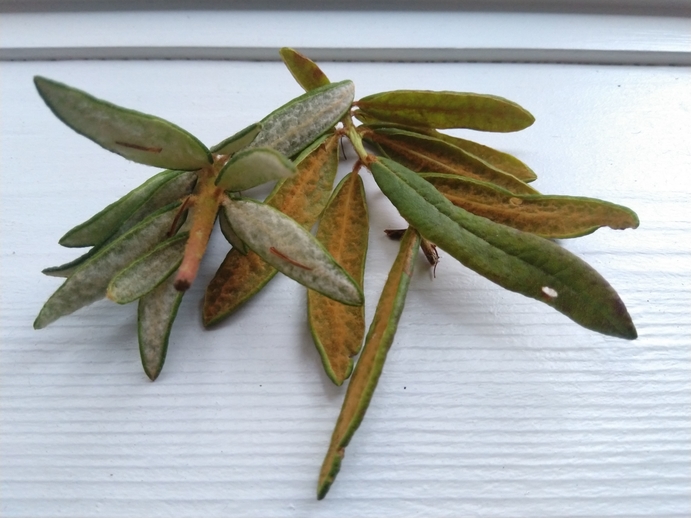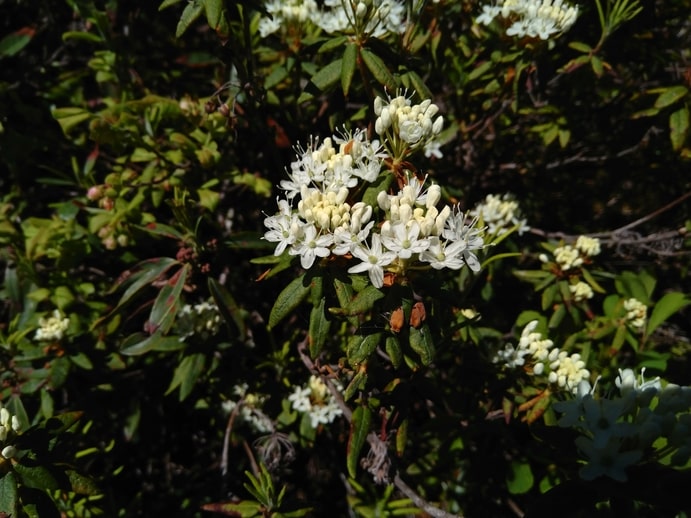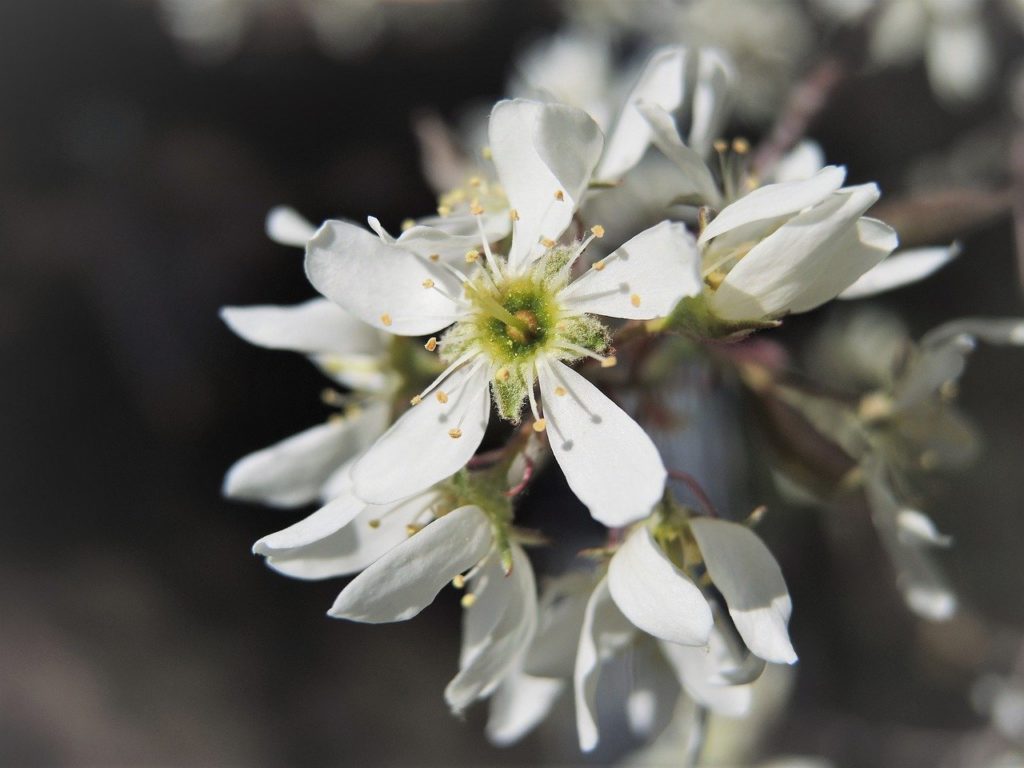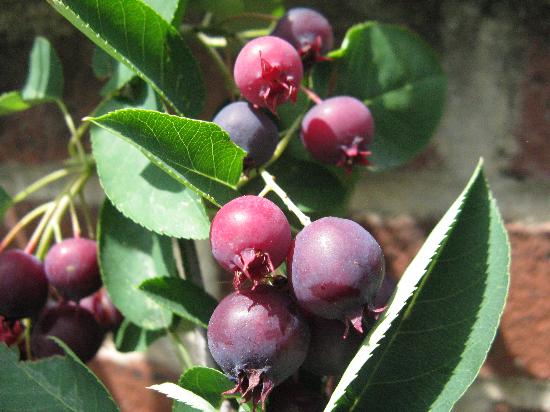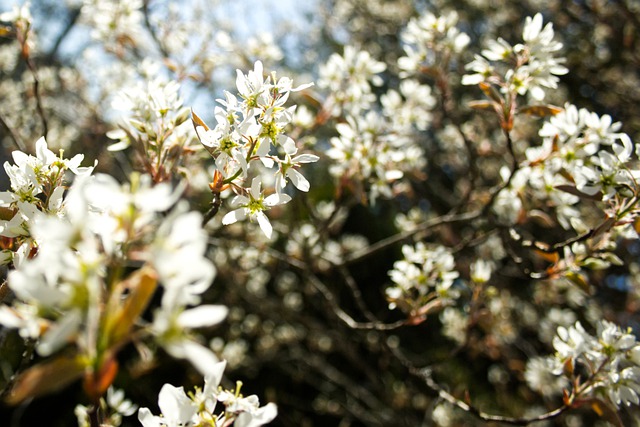Among the known non-timber forest products, boreal forest medicinal plants might be the least explored and studied. Truth is, there is a huge potential in medicinal plants that is waiting to be appreciated. Global interest in health is quickly growing, therefore this sector will soon receive plenty of attention.
Conventional medicine doesn’t always work the way we want, when this happens, we can find an interesting alternative in medicinal plants.
Various regions especially Asia and North America are experiencing a dramatic change in the consumption of medicinal plant products.
There has been an increase in the sales of medicinal plant-based products. Most of the increase in the sales is attributed to the value-added processing, sales of fresh herbs as well as standardized extracts and phytomedicines.
Today, medicinal plant-based products are acquired from a combination of:
Since wild harvest is the option that encourages protecting old-growth forests, this is the technique we will go in detail about.
Disclaimer
If you take any of the boreal forest medicinal plants below, please take them at your own discretion. If you have specific medical conditions, please consult with a doctor first to ensure it’s safe for you to take any of these medicinal plants. I do not take responsibility for any side effects that might occur when you ingest any of the plants below.
As a secondary note, all of the medicinal plants listed below are known to be safe to ingest, but it is always a smart idea to test in small quantities first to see how your body reacts to them.
How to Find and Use Boreal Forest Medicinal Plants
Indigenous people of North America have learned to use many plants found in the boreal forest to cure ailments and disease. To this day they still use them and have left us a legacy of experience and knowledge that’s waiting to be shared with the world.
Even today, only a few have been deeply studied with modern techniques, which means there is still such great potential for these boreal forest medicinal plants in the future.
If you are curious about what mother nature has to offer, knowing how to identify them and where to find them is important.
After all, learning to use boreal forest medicinal plants might take some time, but in end, it will become quite a useful skill.
Down below you will find some of the most powerful medicinal plants found in the boreal forest:
Pro tip: If you are wandering through the boreal forest, it’s a good idea to learn about the boreal forest mammals you might stumble upon in there.
Boreal Forest Medicinal Plants Quick Links
- Canada Yew
- Creeping Snowberry
- Wild Cranberries
- Eastern Teaberry
- Labrador Tea
- Pearly Everlasting
- Common Yarrow
- Threeleaf Goldthread
- Bluebead
- Bunchberry
- Canada Mayflower
- Wild Chamomile
- Stinging Nettle
- Common Burdock
- Common Plantain
- Red Clover
- Canada Goldenrod
- Violet
- Sweetfern
- Sheep Laurel
- Wild Rose
- Serviceberry
- Blueberry
- Beaked Hazelnut
Canada Yew (Taxus canadensis)
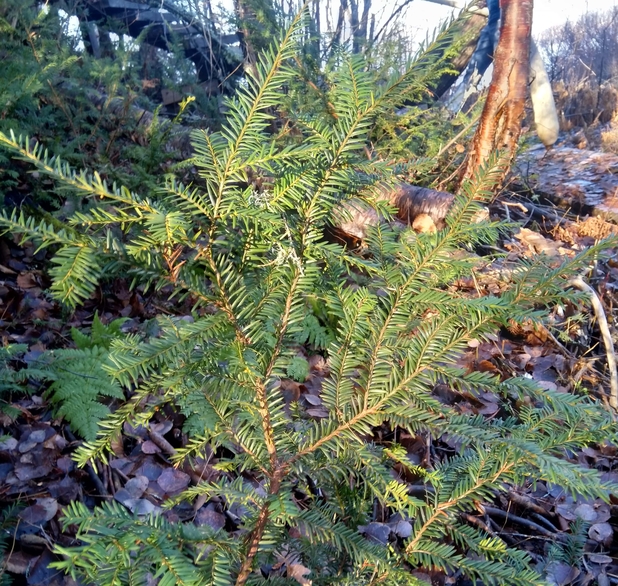
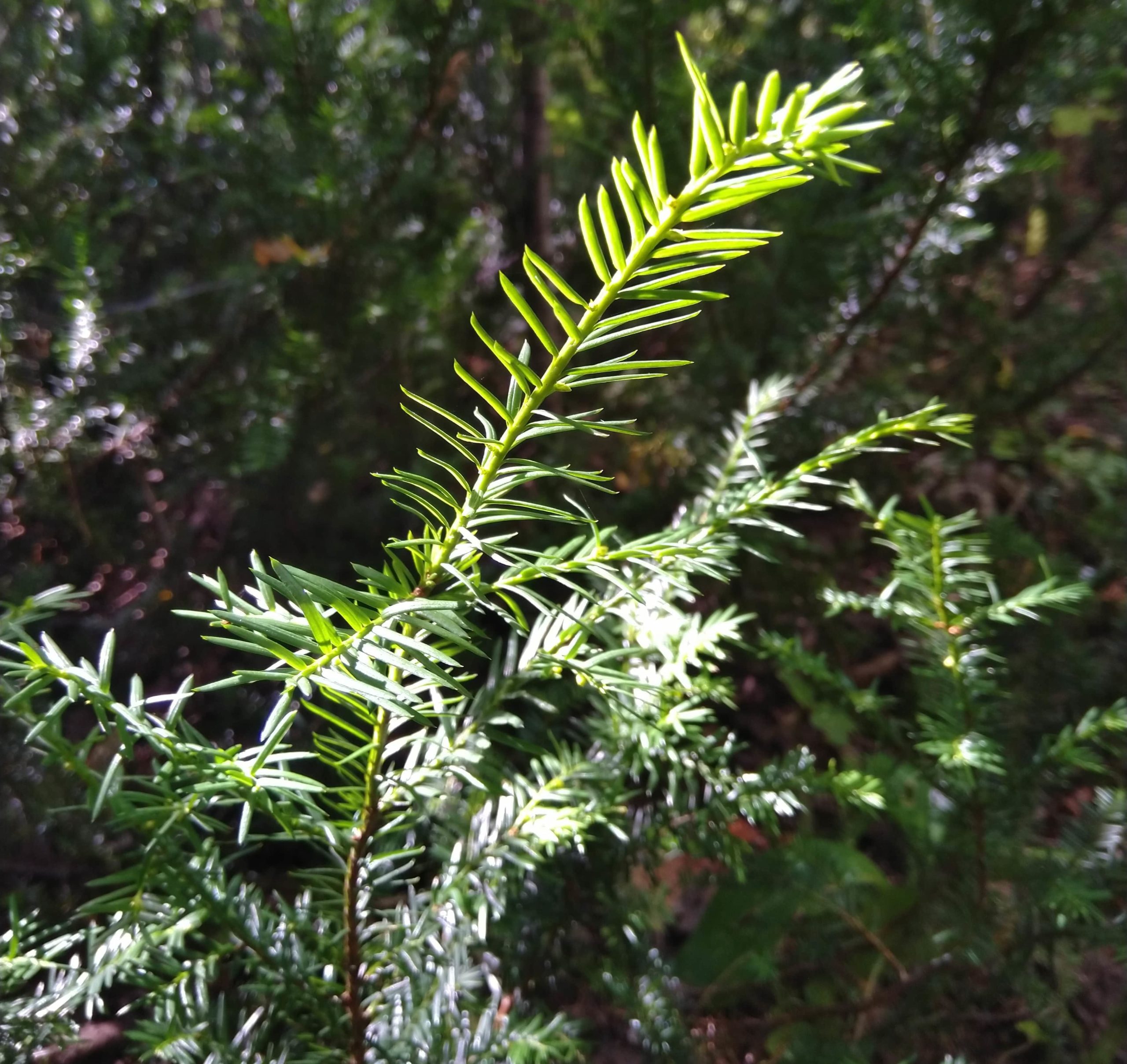
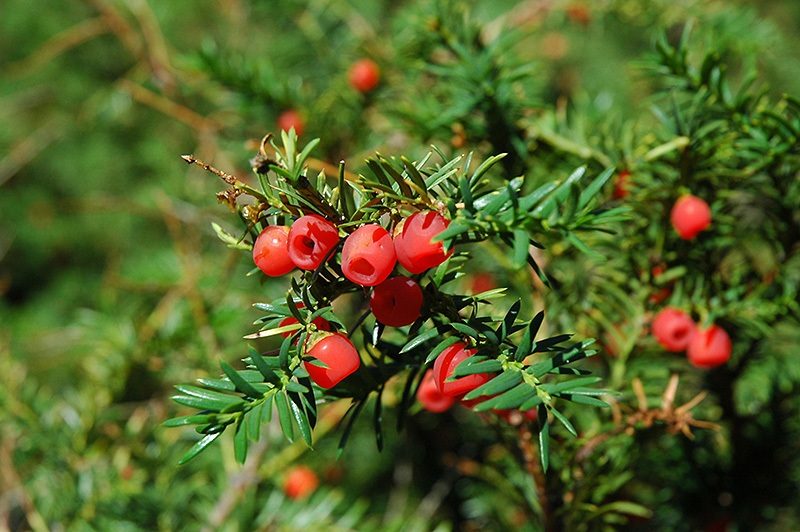
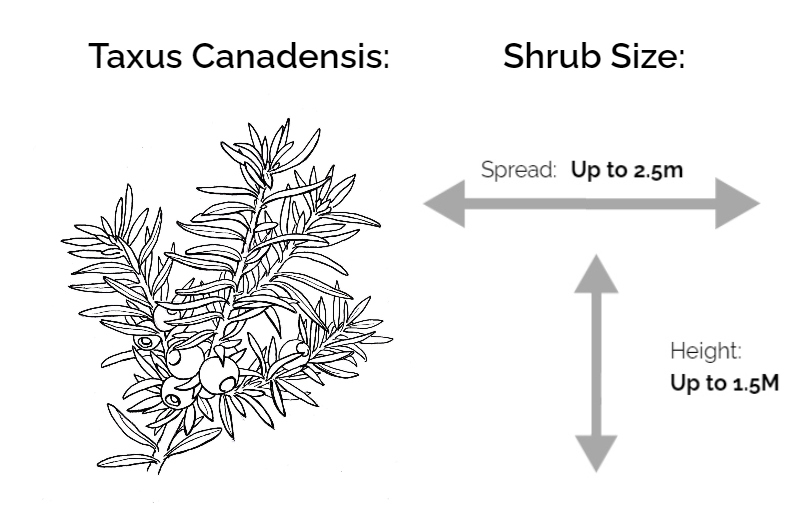
Identification:
Canada Yew is a low-lying coniferous shrub, its needles are flat and range from dark green to bright green. They have a bright red fruit that ripens in late Summer to Fall, inside each cup-shaped fruit is a single fleshy seed. During spring, Canada yew will grow a cone-like yellow-colored flower.
For more info, check out: How to Identify Canada Yew.
Medicinal Properties:
From the tip of the branch, taxol (paclitaxel) can be extracted, it’s a chemical substance that stops cellular division. For this reason, taxol is being used by pharmaceutical companies to make cancer-fighting drugs. It is especially useful against ovary and breast cancer.
Warning: While taxol has merits as a cancer-fighting chemical, in its raw form it is highly poisonous and is present within all parts of the plant except the fleshy fruit.
In very small quantities, Canada Yew can be used for the benefit of the cardiovascular system, it can also have combative effects against rheumatism, menstrual, and muscle cramps.
To treat head and eye aches, you can boil the branches in hot water and mix it with a bit of grease to apply externally to the affected areas.
Where to find Canada Yew:
Canada Yew is a boreal forest medicinal plant that often grows in the shady undergrowth of coniferous or mixed forest, near swamps, ravines, and banks. It grows in sandy loams or moist sandy soils.
Creeping Snowberry (Gaultheria Hispidula)
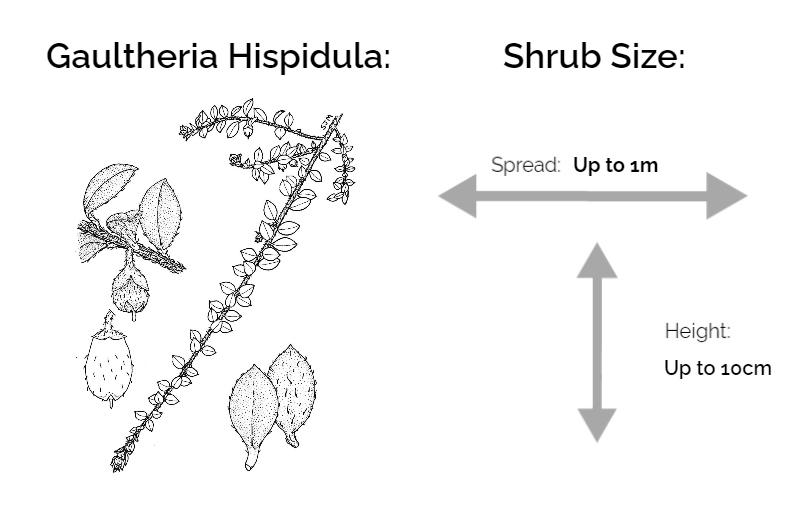
Identification:
Creeping Snowberry is a low-lying vine-like plant with fine stems and small oval-shaped leaves. It is usually a bright green color but leaves can turn into a reddish-brown color. Gaultheria hispidula produces small white fruit with a strong mint aroma. From May to June, creeping snowberry produces tiny flowers that range from white to pink.
For more info, check out: How to Identify Creeping Snowberry.
Medicinal Properties:
Anti-inflammatory, antispasmodic, carminative, digestive, anti-rheumatic, and antiseptic.
Fruits and leaves contain methyl salicylate, which has similar effects to aspirin in treating pain from rheumatism and arthritis. Warning: if you take anticoagulants, avoid drinking any creeping snowberry tea. Otherwise, Gaultheria hispidula tea is known to help with digestion and is quite delicious, personally one of my favorites.
Where to find Creeping Snowberry:
You can find creeping snowberry in peat bogs where moss is present, it often grows in abundance on mossy forest floors and near dead tree stumps. Also along freshwater lakes where the soil is humid year long. Creeping snowberry is found in the large part of the Northern Canadian boreal forest and as south as West Virginia and Idaho.
Wild Cranberries (Vaccinium Oxycoccos)
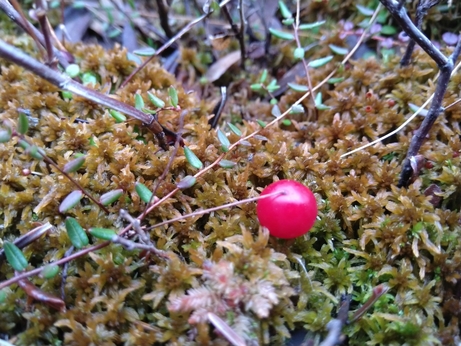
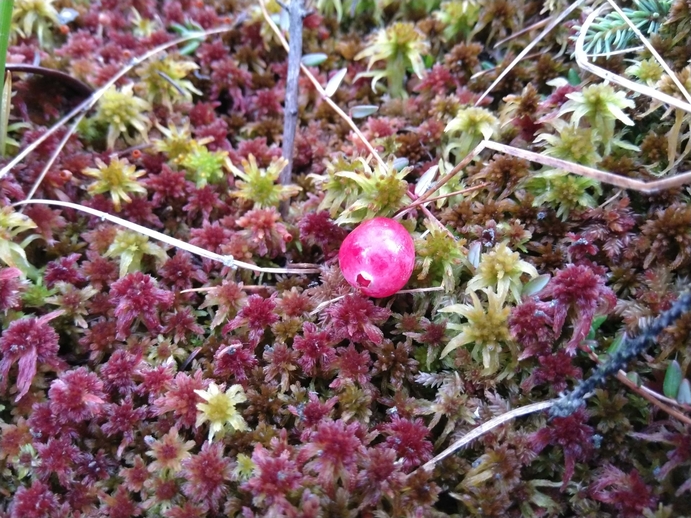
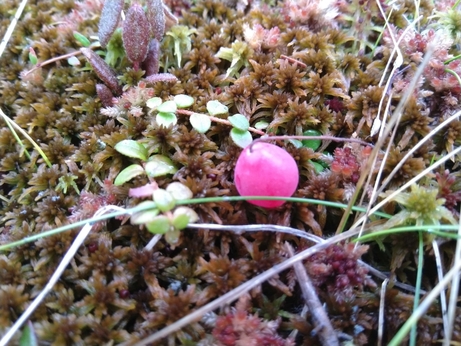
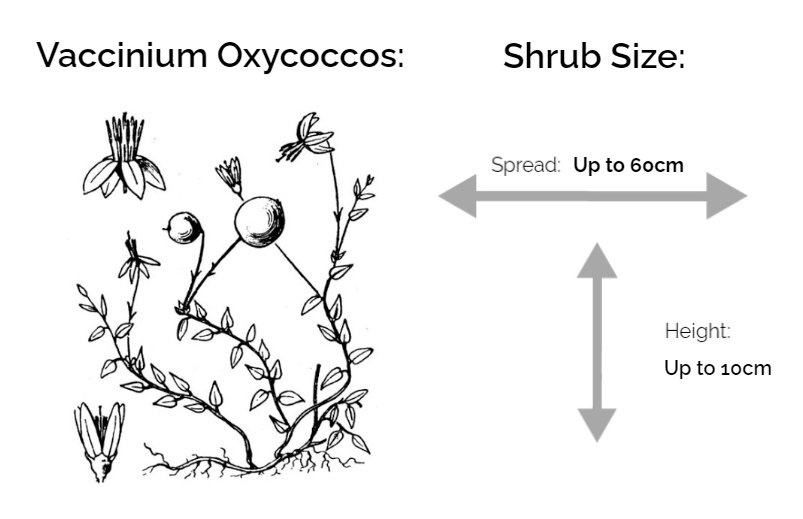
Identification:
Wild Cranberry is a low-lying vine-like plant with tiny arrow-shaped leaves and reddish-brown stems. Vaccinium Oxycoccos produces delicious red cranberries that have a sour and sweet flavor. From June to July, you can observe small pink four-petaled flowers emerge from the plant.
For more info, check out: How to identify Wild Cranberry.
Medicinal Properties:
Diuretic, antiinflammatory.
The fruit, being rich in antioxidants, is used to treat disorders of the kidney and bladder. Cranberry juice is used as a preventative measure to stop bacteria from sticking to the walls of the bladder. Being rich in iron and vitamins, cranberry is useful to stop the formation of dental plaque.
Where to find Wild Cranberries:
Wild Cranberry is often found alongside creeping snowberry, in peat bogs and coniferous forests with a thick moss-covered floor. They thrive in the mossy humid environment of the boreal forest. It can also be found as south as Virginia and Oregon.
Eastern Teaberry (Gaultheria procumbens)
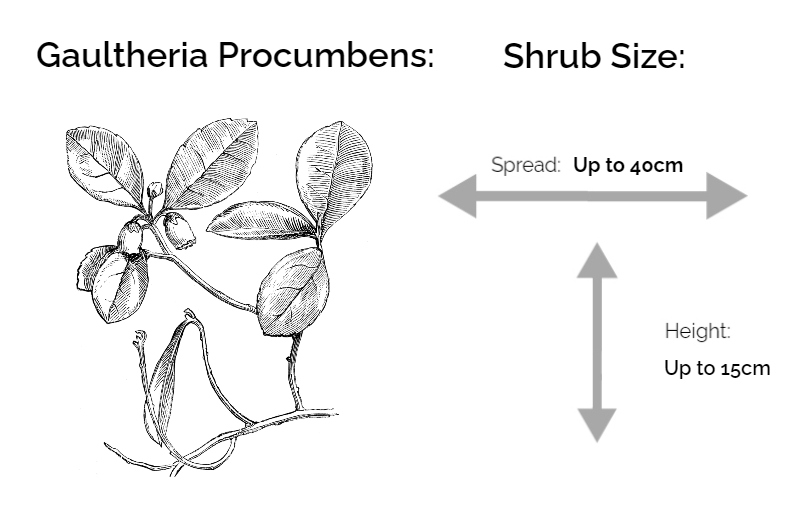
Identification:
Eastern Teaberry is a small plant with simple leaves, the dark green leaves are thick and have a shiny coating on them. They produce a bright red fruit with a minty aroma. Gaultheria procumbens‘ white, bell-shaped flower blooms from early to late Summer.
For more info, check out: How to Identify Wintergreen.
Medicinal Properties:
Digestive, Antispasmodic, Antiseptic, anti-inflammatory, anti-rheumatic, carminative.
The leaves and fruit contain methyl salicylate, just like creeping snowberry, it has similar effects to aspirin in treating pain from rheumatism and arthritis. Warning: If you take anticoagulants, avoid drinking any eastern teaberry tea, and avoid eating any of the fruits. The carvone, isopropanol I & II, selinene, and limonene found inside the plant are what give Gaultheria procumbens its pain-relieving qualities.
Where to find Eastern Teaberry:
Eastern teaberry often grows on rocks, it’s a companion plant to Jackpine trees. It likes to grow in moist acidic soils sometimes along with Labrador tea. Gaultheria procumbens is only found naturally on the east coast of North America, from the boreal forest to the north and as south Georgia and Alabama.
Labrador Tea (Rhododendron groenlandicum)
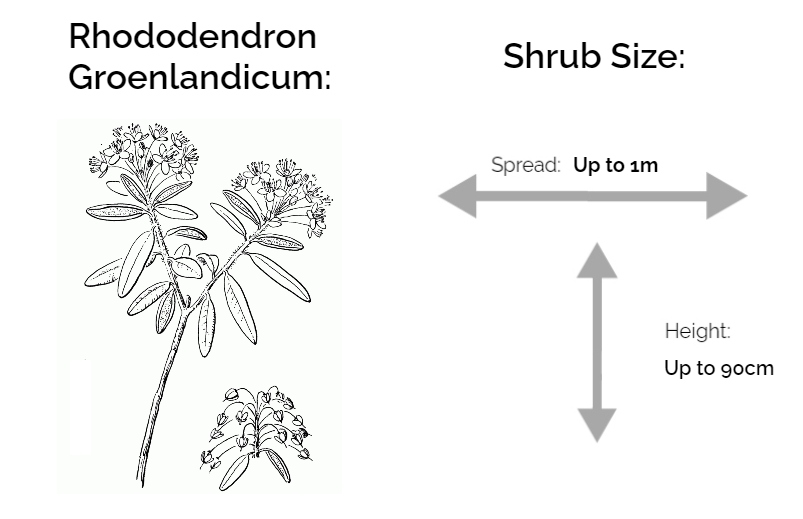
Identification:
Labrador tea has long oval leaves, with a distinctive white velvet underside, as the leaves get older, the white color turns into a rusty brown color. The plant stem becomes hard and woody over time, Rhododendron groenlandicum flowers from late May to mid-July. The strong aroma of Labrador tea often attracts various insects.
Warning: Kalmia angustifolia is often confused with Labrador tea as it looks very similar, you can confirm that it’s Labrador tea if the leaf has a velvet underside.
Medicinal Properties:
Labrador tea is a mild narcotic, it shouldn’t be taken in tea in too large of quantities as it can intoxicate you. Leaves possess mild antimicrobial and anti-diabetic properties. Dried and turned into powder, you can use the leaves to fight common colds, headaches, strep throat, digestive, liver and kidney problems. Carvone, isopropanol I & II, selinene and limonene present in the plant give it pain-relieving qualities.
Where to find Labrador Tea:
Labrador tea grows in large colonies around peat bogs, swamps, and mossy forests. It also likes to grow in the undergrowth of humid coniferous forests. Labrador Tea grows in all the north American boreal forests and as south as Pennsylvania and Oregon.
For more info, check out: Labrador Tea Identification & Foraging Guide.
Pearly Everlasting (Anaphalis margaritacea)
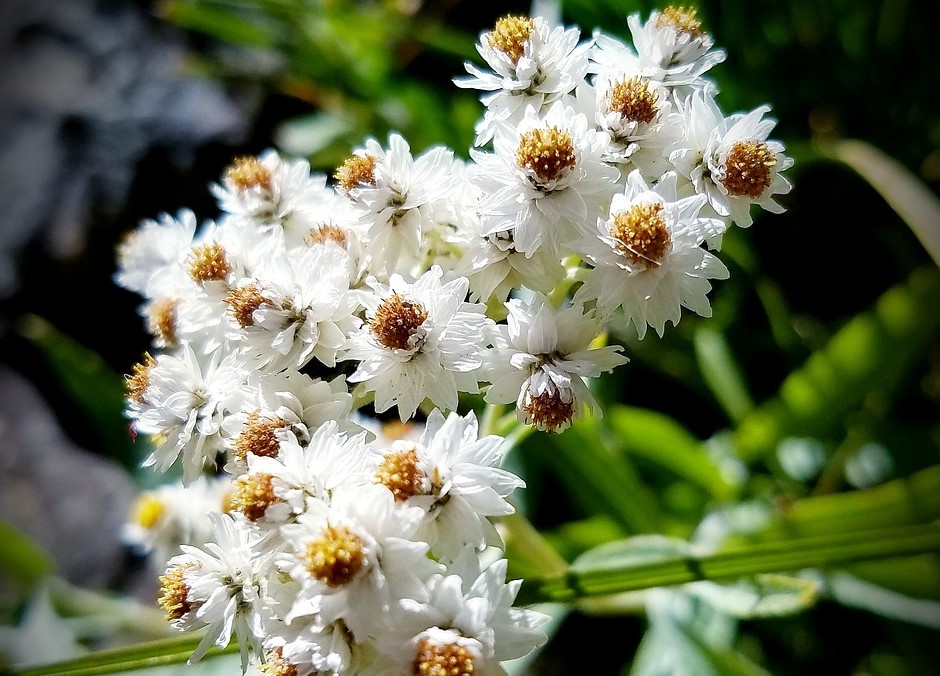
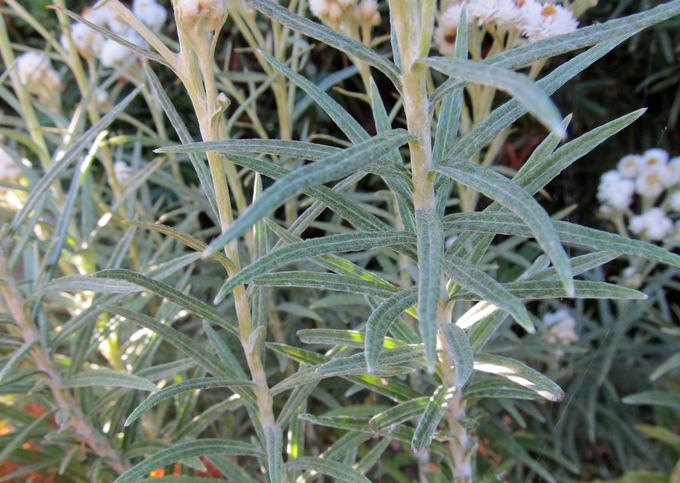
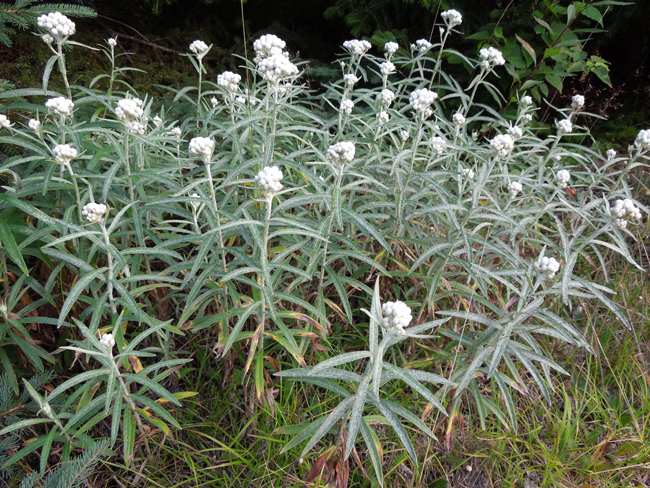
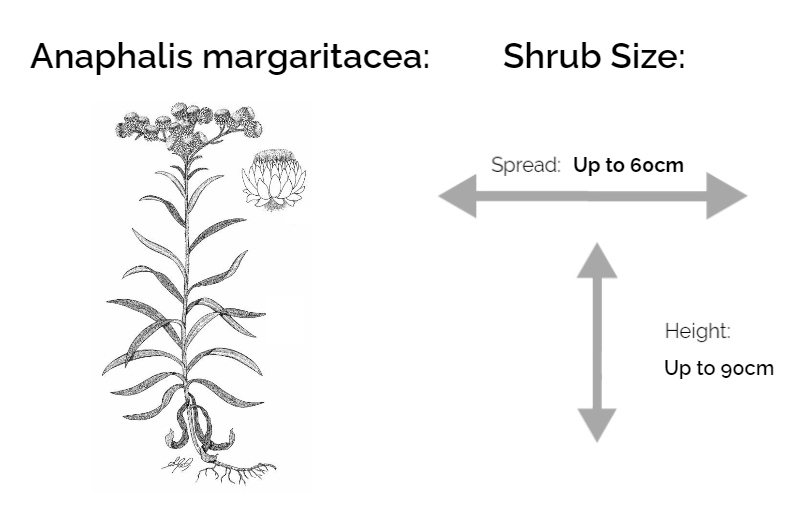
Identification:
Pearly Everlasting is a herbaceous plant easily recognizable by its bundles of button-like white flowers with a yellow center. It often grows in colonies, it has long blade-like leaves that have a base green color with a tinge of white across. The leaf undersides have little hairs, giving the plant a slight wooly appearance.
Medicinal Properties:
Anti-inflammatory, sedative, astringent, expectorant.
The whole plant is a common remedy for burns, fever, and scrapes. Drinking pearly everlasting tea will help you with lung infections by relieving symptoms, it’s especially useful to clear sinuses and bring out mucus. Young leaves are said to have aphrodisiac properties.
Where to Find Pearly Everlasting:
Anaphalis margaritacea grows in open areas, often in abandoned farmland, near sidewalks in cities, and in backyards. They like to grow in grasslands with plenty of direct sunlight. They grow in a large part of North America, from northern Canada to as south as Texas and North Carolina.
Common Yarrow (Achillea millefolium)
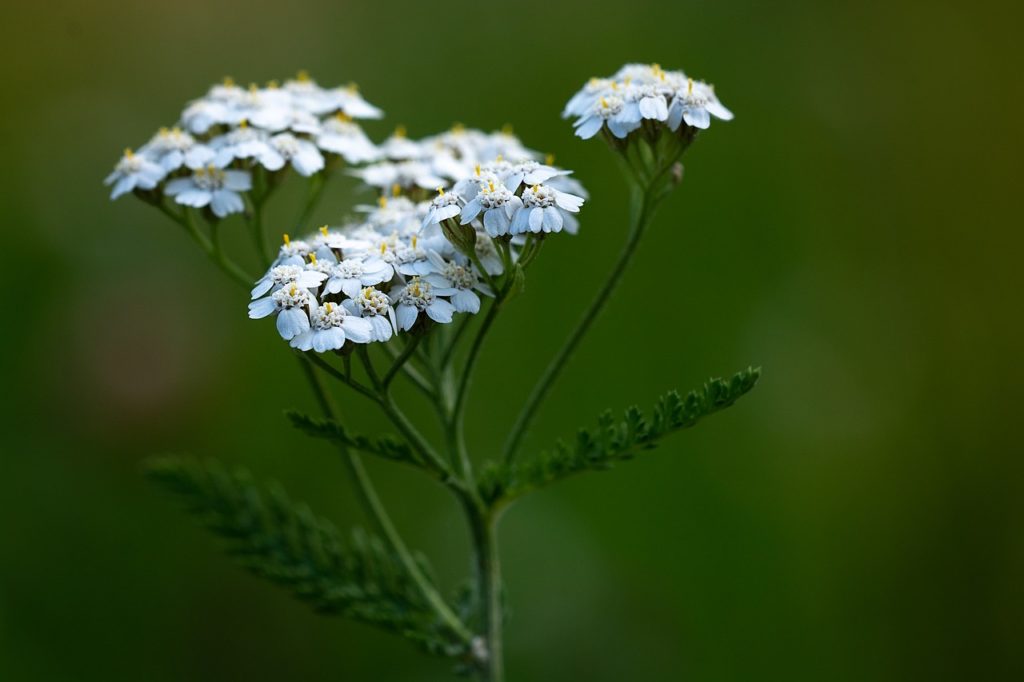
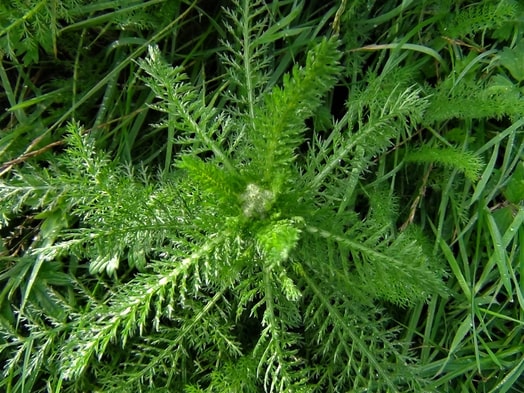
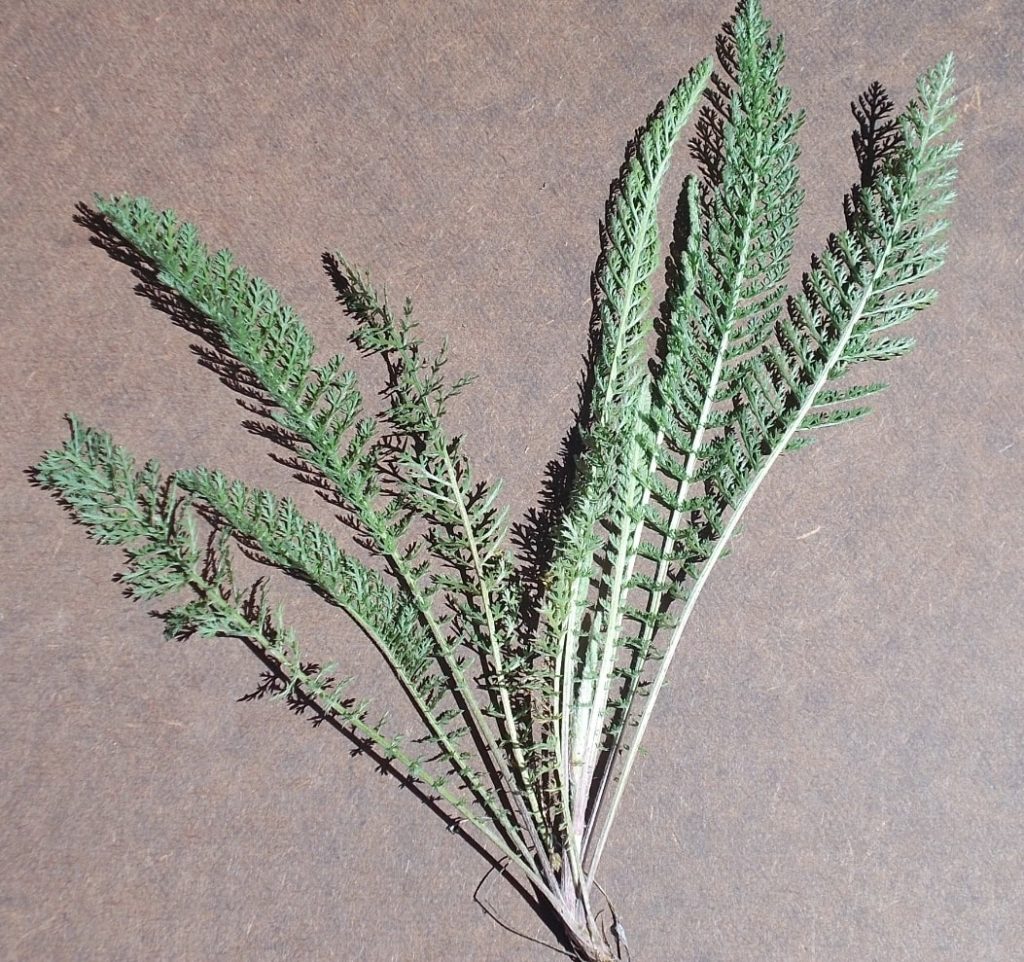
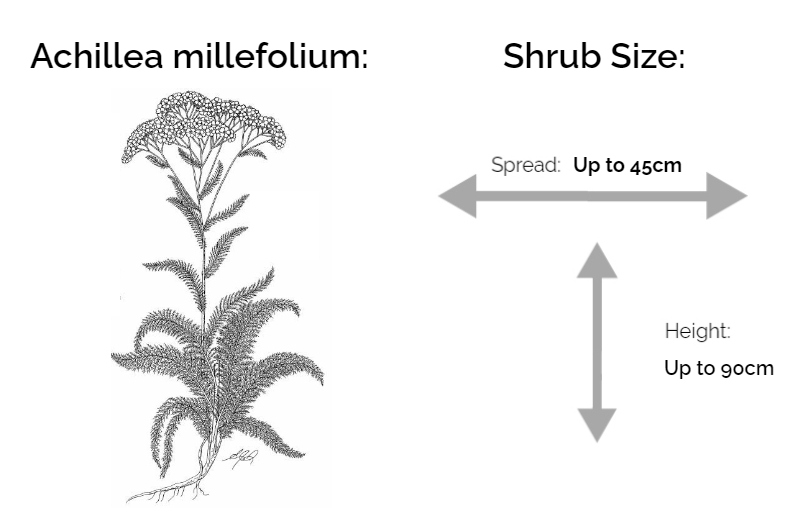
Identification:
Common Yarrow is a herbaceous plant with a hairy stem, the base of the plant is similar to a fern and the leaves are very fine, they a similar resemblance to carrot leaves. The tiny white flowers grow in clusters and have fine petals.
Medicinal Properties:
Astringent, antispasmodic, bitter tonic, hemostatic, febrifuge, anti-inflammatory, diuretic, antiseptic, cicatrizing, cholagogue, uteroovarian sedative, hypotensive, menstrual facilitator.
Common Yarrow has a long history of medicinal uses, dating back to ancient Greece. Achillea millefolium (named from Achilles, who used it to treat wounds) is harvested during the blooming season and should be dried upside down. It contains powerful bactericides, which prove useful in reducing fever, relieving headaches, tooth aches, respiratory problems, and common cold.
Where to find Common Yarrow:
Common Yarrow grows in open dry areas, often growing through gravel in abandoned parks and alongside grass in farmland. Often growing in clusters around forest edges in prairies. In North America, it is an introduced plant that can be found almost anywhere.
Threeleaf Goldthread (Coptis Trifolia)
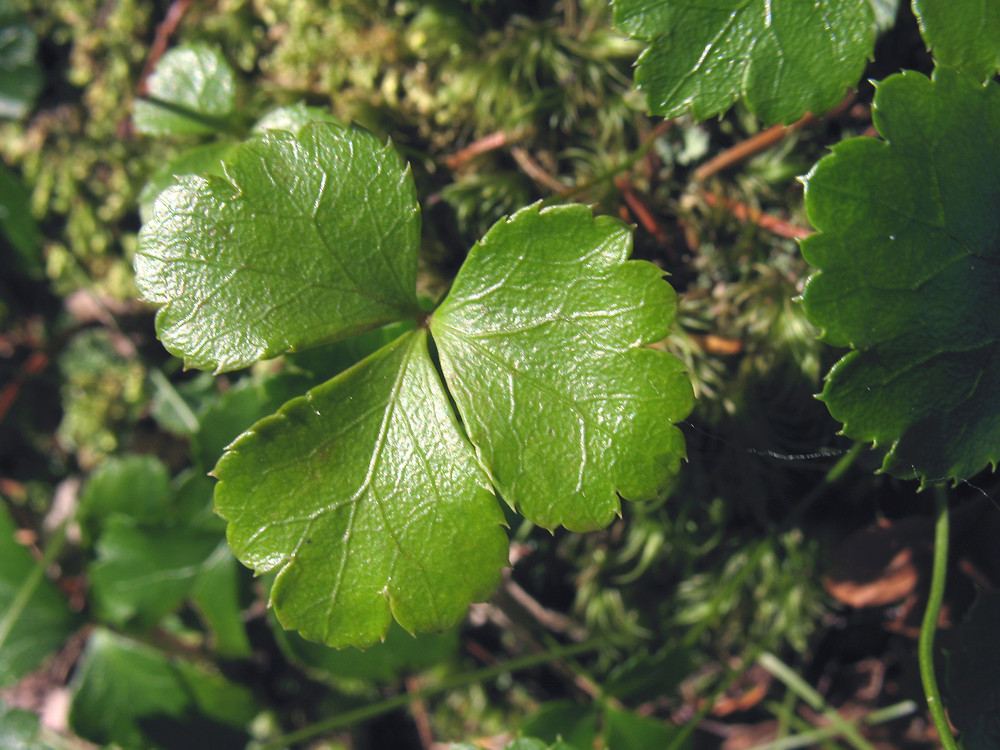
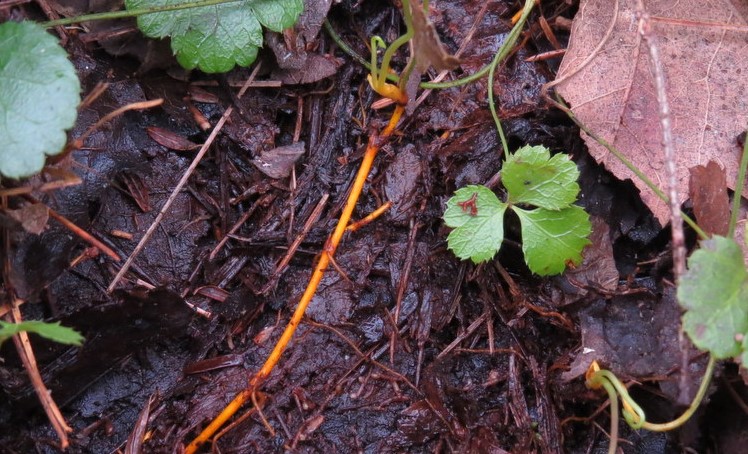

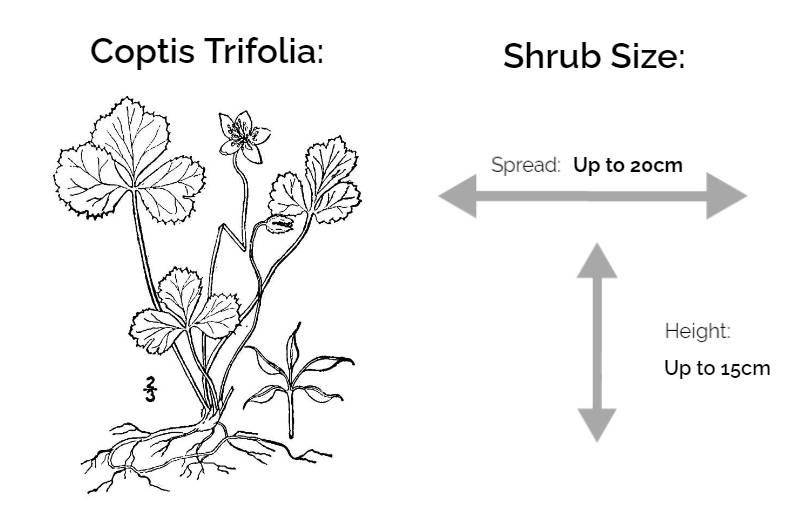
Identification:
Threeleaf goldthread is a small herbaceous plant with three glossy leaves, closely resembling a shamrock. Coptis Trifolia sprouts from a yellow rhizome that travels horizontally underground. From May to June, Threeleaf Goldthread plants produce single small white flowers, the seeds appear in small hooked capsules on vertical rising forked stems.
For more info, check out: How to Identify Threeleaf Goldthread.
Medicinal Properties:
Antiscorbutic, antiseptic, pain killer, stomachic, tonic. It contains an alkaloid called berberine, which has been used against diabetes, high cholesterol, and high blood pressure.
There’s some common knowledge within the Algonquin tribe of North America regarding Coptis trifolia. They would use the yellow rhizome to eliminate diarrhea, treat respiratory problems, soothe kidney aches, back, and spine pain, treat burns, and stomach ulcers.
The root was used to heal wounds and treat skin disease. Some say chewing the rhizome will keep your teeth clean and white, and space out dentist visits. (If you can handle the strong bitter taste of the root.)
It is not recommended to use Threeleaf Goldthread if you suffer from liver problems, as it contains some toxins and should be used with caution.
Where to find Threeleaf Goldthread:
Coptis trifolia grows in carpets in humid coniferous undergrowth. It likes a shady area and is found in well-drained soil as well as poorly drained soil such as near peat bogs. It grows in almost all of Canada’s boreal forest, and as south as North Carolina and Oregon.
Bluebead (Clintonia Borealis)
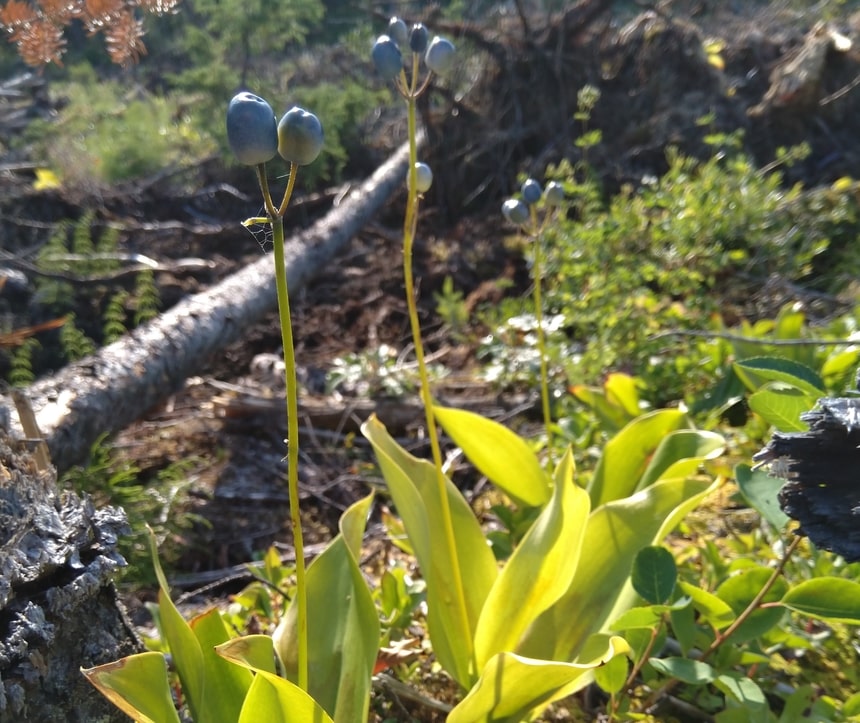
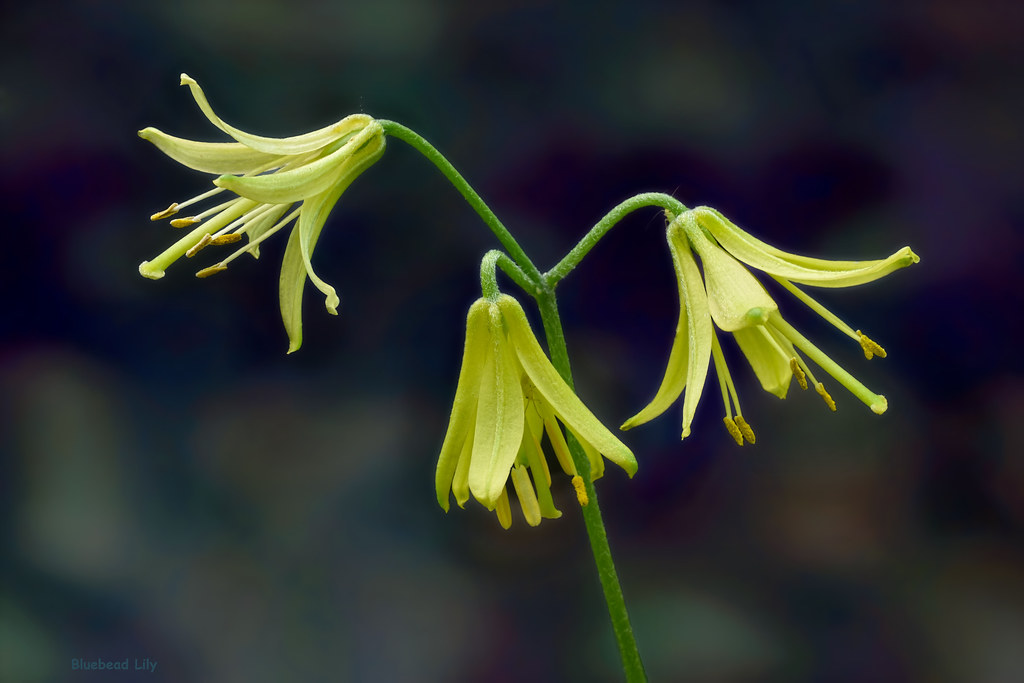
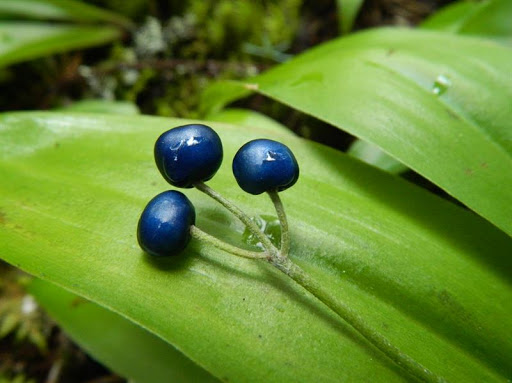
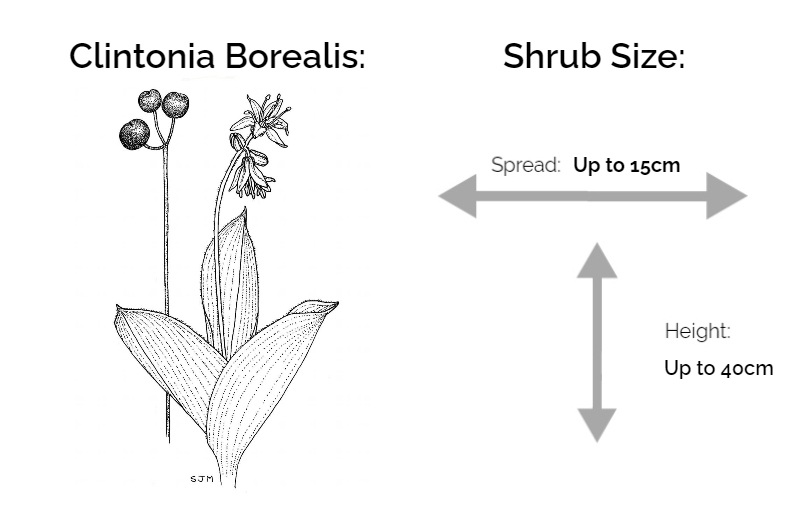
Identification:
Bluebead is an easily recognizable herbaceous plant by its large glossy leaves and blue fruits. From May to June, Clintonia borealis produces pale yellow flowers. Afterward, the flowers turn into beautiful yet toxic blue bead-like fruits.
Medicinal Properties:
The leaves, as a poultice, are applied to treat cuts, infections, and skin ulcers. Infusing the roots of Clintonia borealis is said to help women facilitate delivery.
Rubbing the leaves on your skin can help to keep mosquitoes at bay.
Warning: the blue fruits are toxic.
Where to find Bluebead:
Clintonia borealis is a boreal forest medicinal plant that often grows in colonies, in humid, and fresh woodlands. It likes to grow in shaded, well-drained, or poorly-drained soils. Bluebead grows only in eastern North America, as North as Quebec, and as south as Georgia.
For more info, check out how to identify & propagate Bluebead.
Bunchberry (Cornus canadensis)
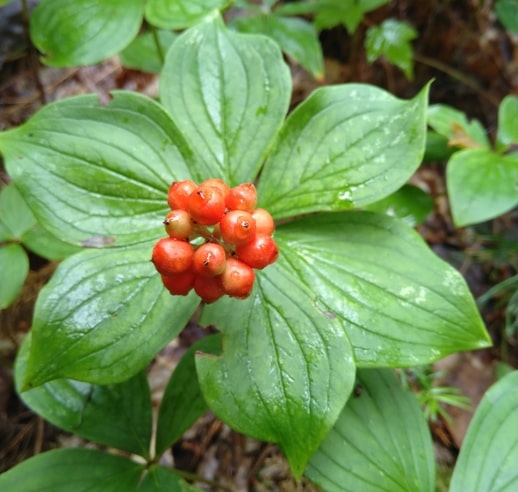
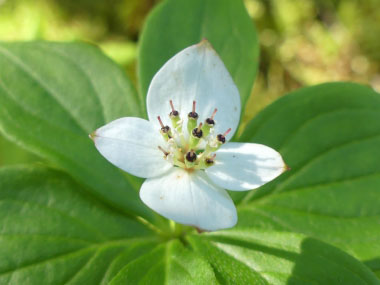
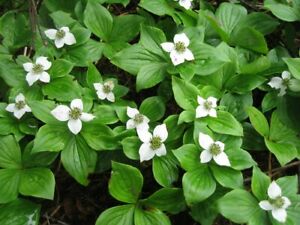
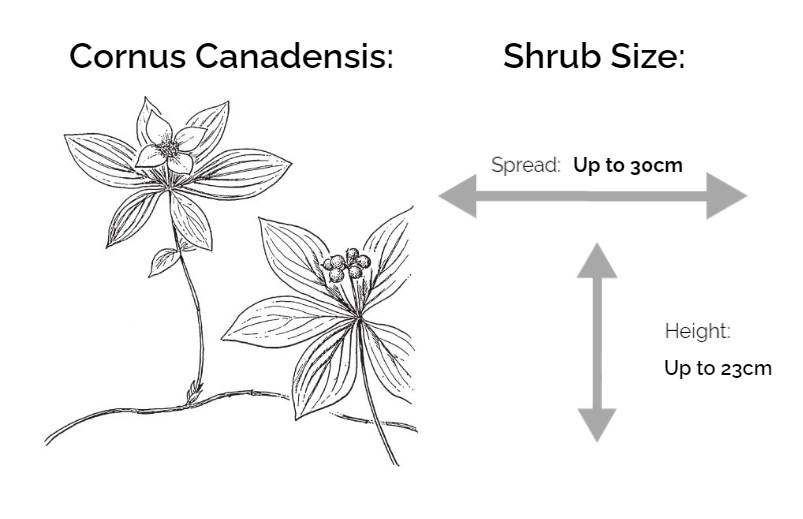
Identification:
Cornus Canadensis is a beautiful herbaceous plant with 4 to 6 oval-shaped leaves. At the center of each leaf bundle grows a stem producing splendid 4 to 6-petaled white flowers from May to June. Not long after, the flowers change into bright red bundles of berries.
Medicinal Properties:
Leaves and stems: Analgesic, cathartic, febrifuge.
Fruits: capillary tonic, antioedemic, anti-inflammatory, antispasmodic, and hypotensive.
Pectin, found inside the fruits has potential uses to inhibit carcinogenesis and protect against radiation.
A strong decoction of mashed bunchberry roots is a useful remedy against eyesores, and useful as a wash to remove foreign objects from the eye.
Where to find Bunchberry:
Bunchberry is found growing in colonies in peaty soils, from shady to partial shade. It is an undergrowth plant that can adapt to a large variety of soils. It is typically a northern plant that can be found all over Canada but also grows as south as Colorado and New Mexico.
For more info, check out: How to identify & Propagate Bunchberry.
Canada Mayflower (Maianthemum canadense)
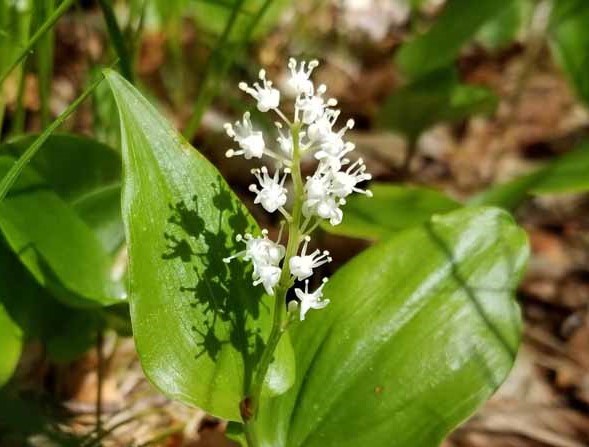
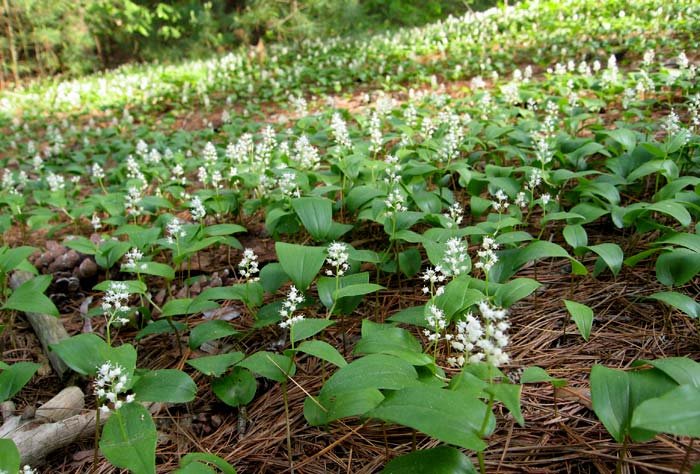
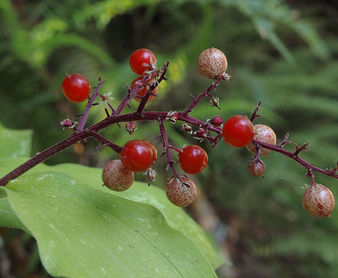
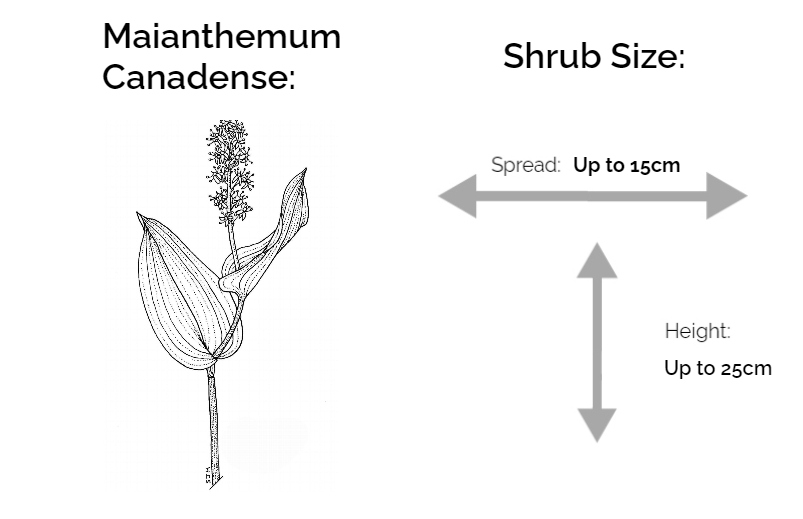
Identification:
Canada mayflower is a small vertical-stemmed plant that grows two separate glossy and oval-shaped leaves. From May to June, the final part of the stem creates some pretty little white flowers in a cluster. Afterward, the flowers turn into bright red fruits that last even through winter.
Medicinal Properties:
Expectorant.
You can make tea from Maianthemum canadense leaves to treat headaches. In a cold tea, you can gargle to relieve sore throats. Pregnant women have used mayflower as a kidney tonic. Young leaves are sometimes sought after in the spring for the purgative effect.
It should be known that while the fruits are edible, they should be consumed with caution and never in excess.
Where to find Canada Mayflower:
Maianthemum canadense likes to grow in humus-rich soils, often in recently cleared woodland. It grows in abundance in the coniferous understory of the Northern boreal forests. You can find mayflower all over Canada and in the U.S. as south as Georgia.
For more info, check out: How to identify & propagate Canada Mayflower.
Wild Chamomile (Matricaria discoidea)
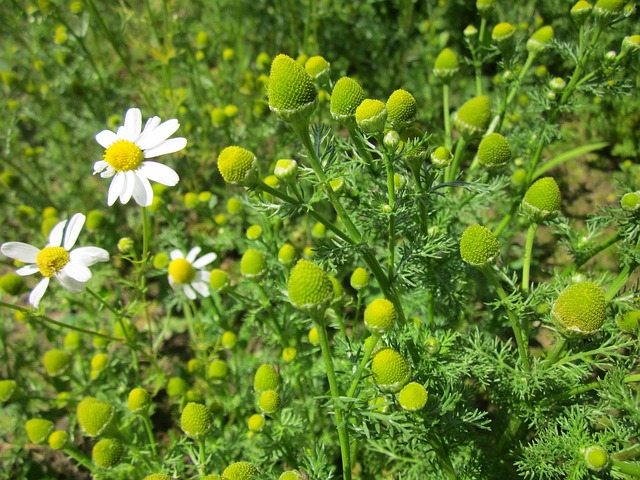
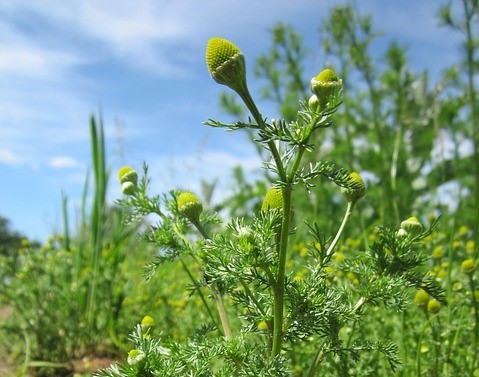
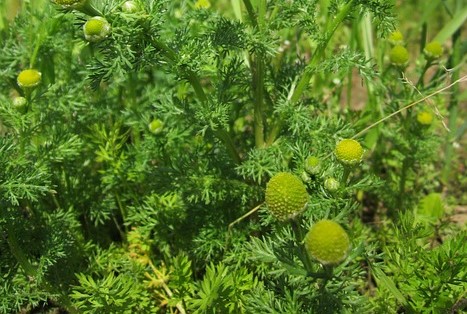
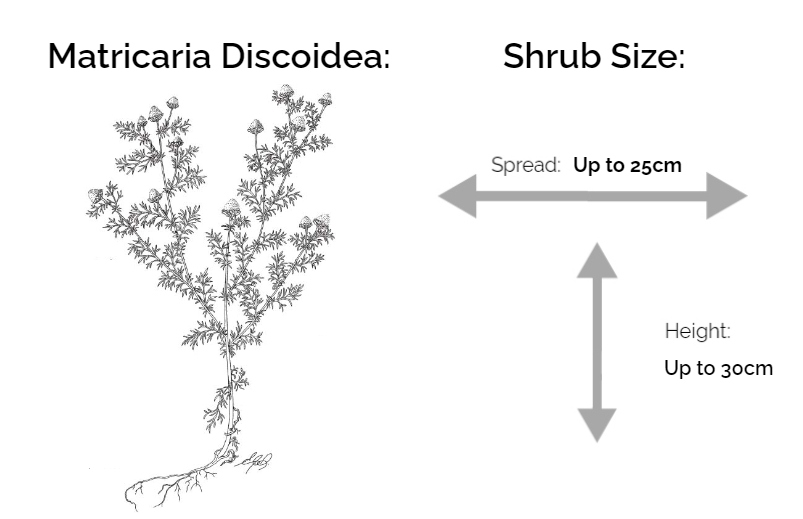
Identification:
Wild Chamomile grows vastly divided fine leaves that give off a strong scent. The yellow petal-less flowers grow throughout Spring and Summer. Matricaria discoidea‘s distinct look makes it hard to mistake for any other plant.
Medicinal Properties:
Antibacterial, anti-inflammatory, antiviral, mild sedative.
Chamomile is a medicinal plant with properties that are useful to relieve nervous tension, irritability, and digestive problems.
Matricaria discoidea has been recommended to use against Crohn’s disease and duodenal ulcers.
Native Americans used the plant as a perfume for their pillow and as an insecticide.
Where to find Wild Chamomile:
Wild chamomile often grows near homes, around fences, and on abandoned agricultural land. It has been introduced to North America but can be found nearly everywhere.
Stinging Nettle (Urtica Dioica)
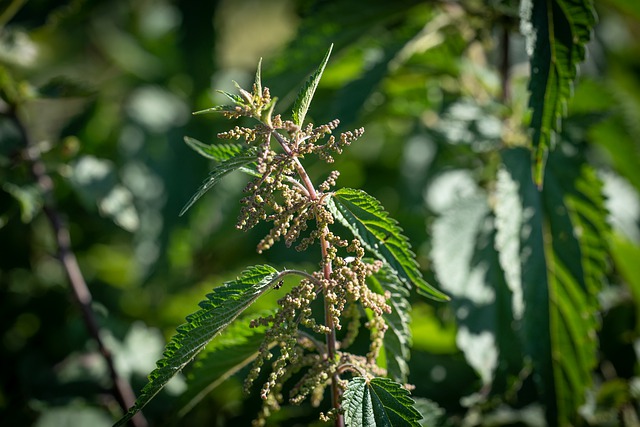
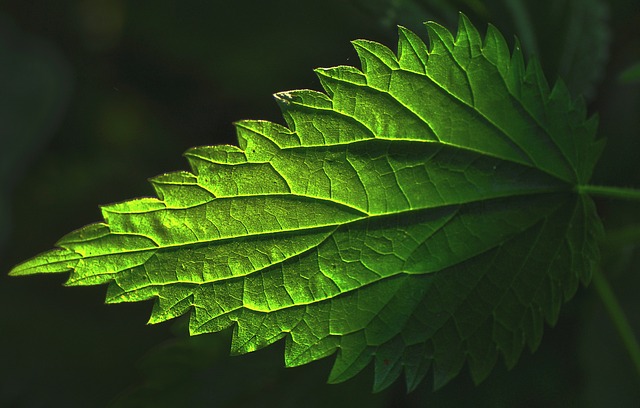
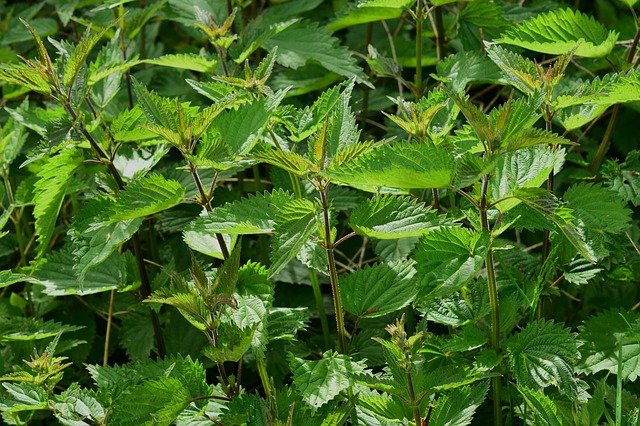
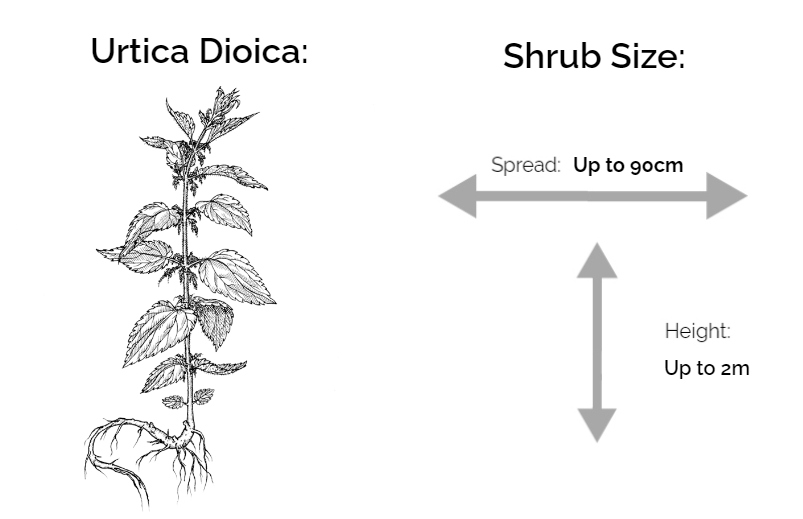
Identification:
Stinging Nettle is a tall herbaceous plant that grows a single vertical stem covered in little hairs. It grows large toothed leaves in pairs of two that are opposed. For Urtica Dioica, the blooming season begins in July and lasts until September, you can observe many little green flowers growing on the stem.
Medicinal Properties:
Stinging Nettle, despite its name has a vast array of medicinal properties:
Tonic, astringent, vasoconstrictor, hemostatic, anti-anemic, mineralizing, purifying, anti-infectious, anti-rheumatic, diuretic, hepatic drainer, anti-allergenic, stomachic, revulsive, galactagogue, anti-gout, anti-diabetic, vermifuge.
Stinging nettle’s root juice may promote hair growth. Urtica dioica‘s leaves and roots contain many essential minerals and acids such as gallic acid, tannin, iron, sulfur, silica, calcium, ammonia, manganese, potassium, and provitamin A.
Stinging nettle is a staple medicinal herb, common uses are to steep the leaves into a tea to treat inflammation, treat enlarged prostate, and fever. It can lower blood pressure, regulate blood sugars, and help liver problems.
Where to find Stinging Nettle:
Stinging nettle is an invasive species, especially in abandoned agricultural land, roadsides, and logging trails. It likes to grow in open areas under full sun, sometimes near streams and river beds. Urtica dioica can be found growing all over North America.
Stinging nettle should be handled with care since the tiny hairs on the stem and leaves can cause an allergic rash. The best way to harvest is by cutting the top four inches of the leaves, where nearly no white spittles are present.
Common Burdock (Arctium minus)
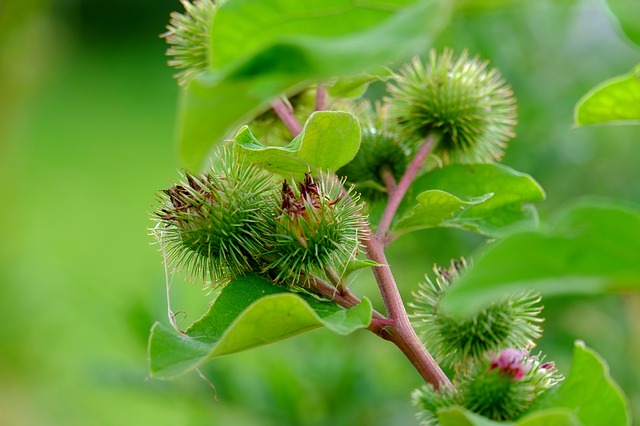
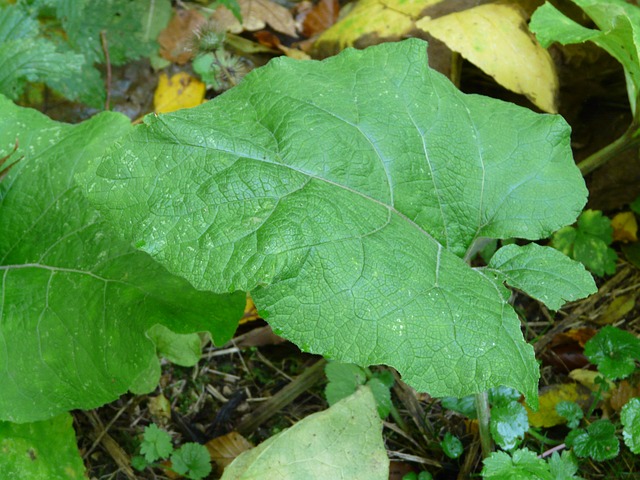
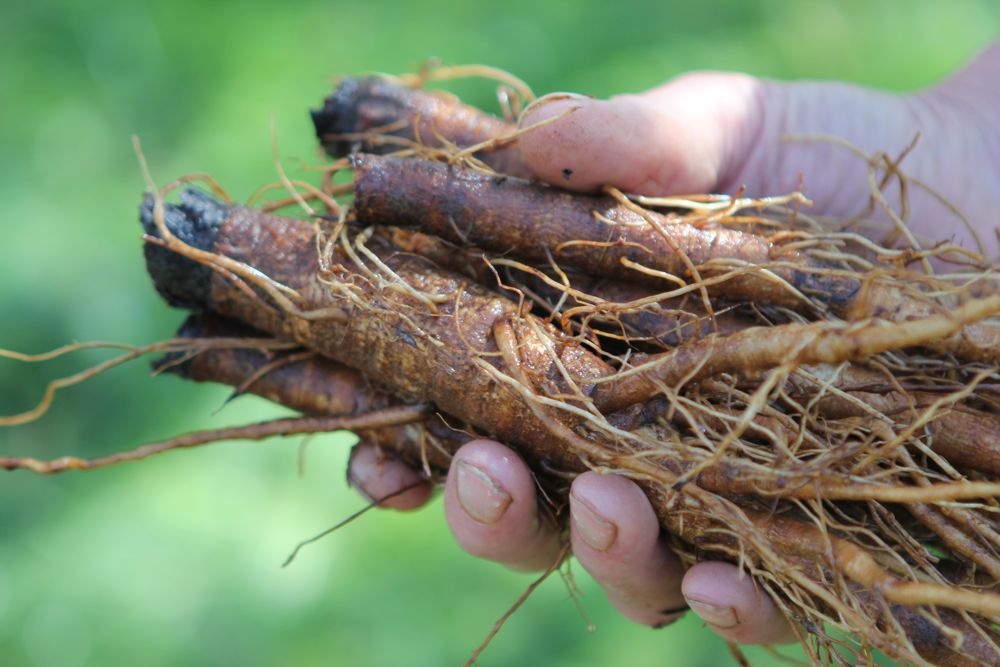
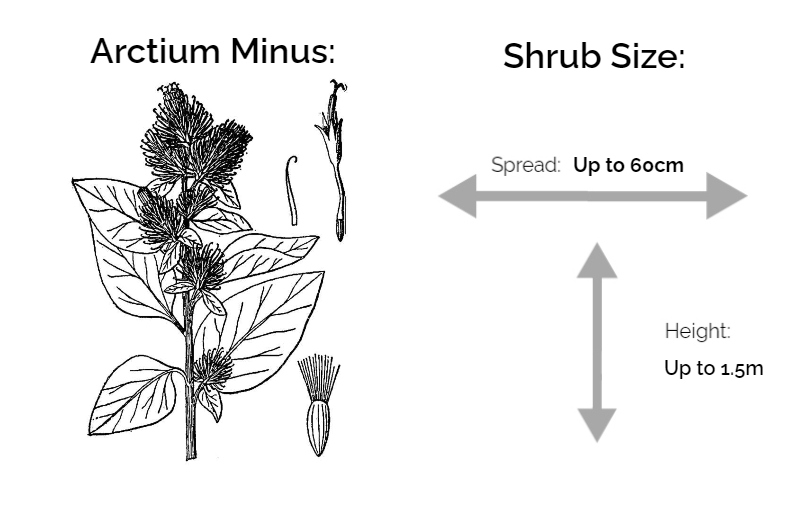
Identification:
Common Burdock is a long-stemmed plant that divides into multiple stems. The leaves at the base are large and rippled. Leaves found on the stem are smaller and grow alternatively. From July to September, you can observe pink spiky flowers that grow in bunches. You’ve probably had these spiky balls stick to your pants or pets before, they can be a hassle to take off.
Medicinal Properties:
Depurative, sudorific, diuretic, choleretic, anti-diabetic, laxative.
Common Burdock is often used to purify the blood and clean your liver. It’s useful for treating kidney problems, rheumatisms, vertigo, hypertension, hyperglycemia, and gonorrhea.
Arctium minus also helps combat premature hair loss, eczema, psoriasis, and skin infections.
Common burdock is rich in vitamins and iron, every part of the plant is edible. (Young leaves added to salads, mature leaves boiled in soups and stews, roots as legumes, dried and ground the root can be a coffee substitute.)
Where to find Common Burdock:
Arctium minus often grows in abandoned fields, overgrown land, roadsides. You can find them in large colonies there or sometimes smaller colonies throughout forest edges. Since it’s a biennial plant (lasts for and occurs every two years), it likes undisturbed soil.
Common Plantain (Plantago major)
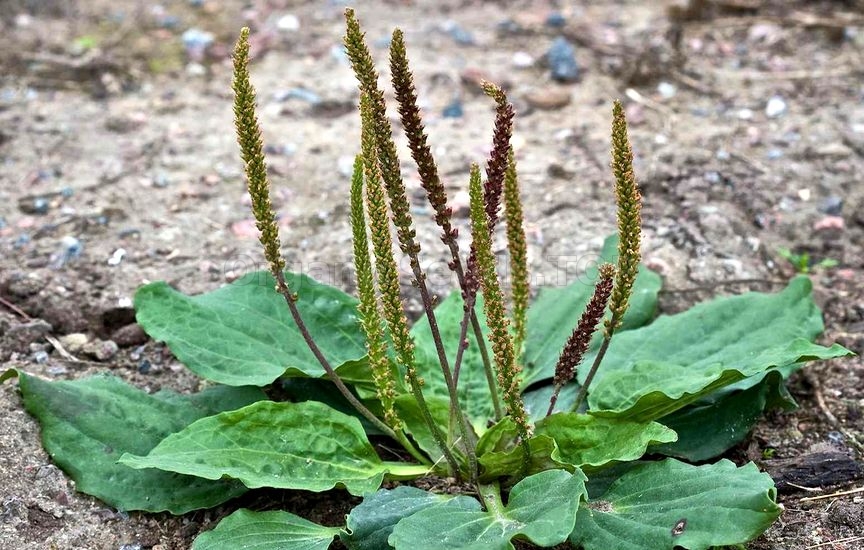
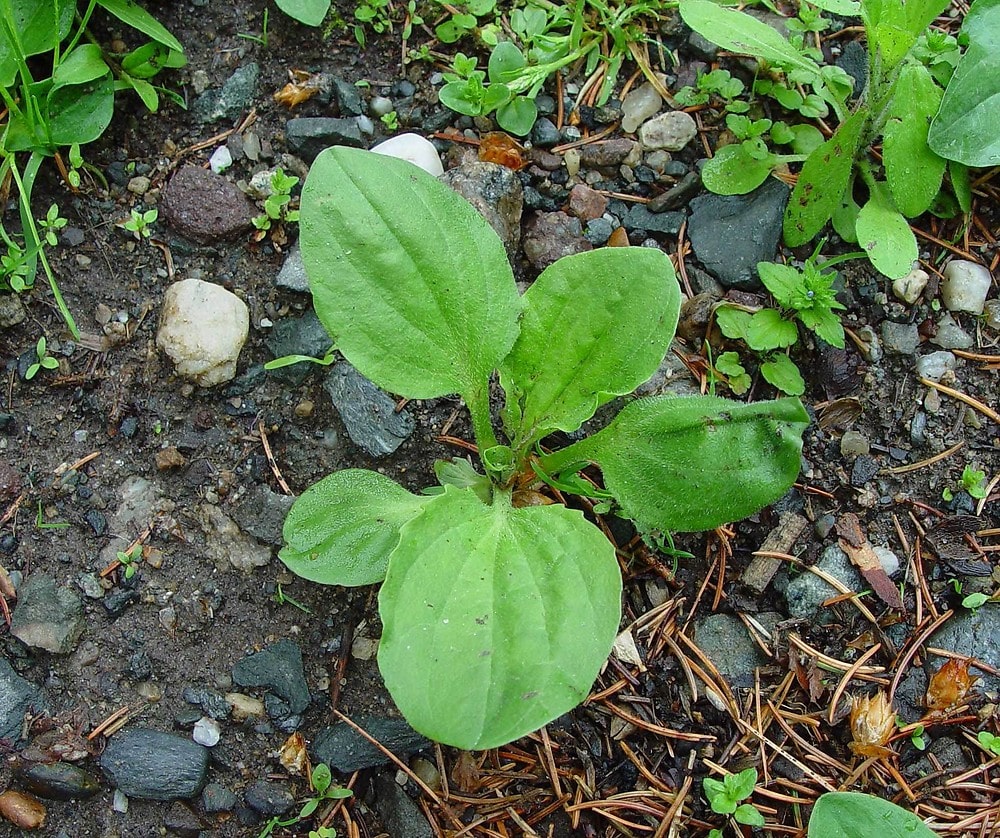
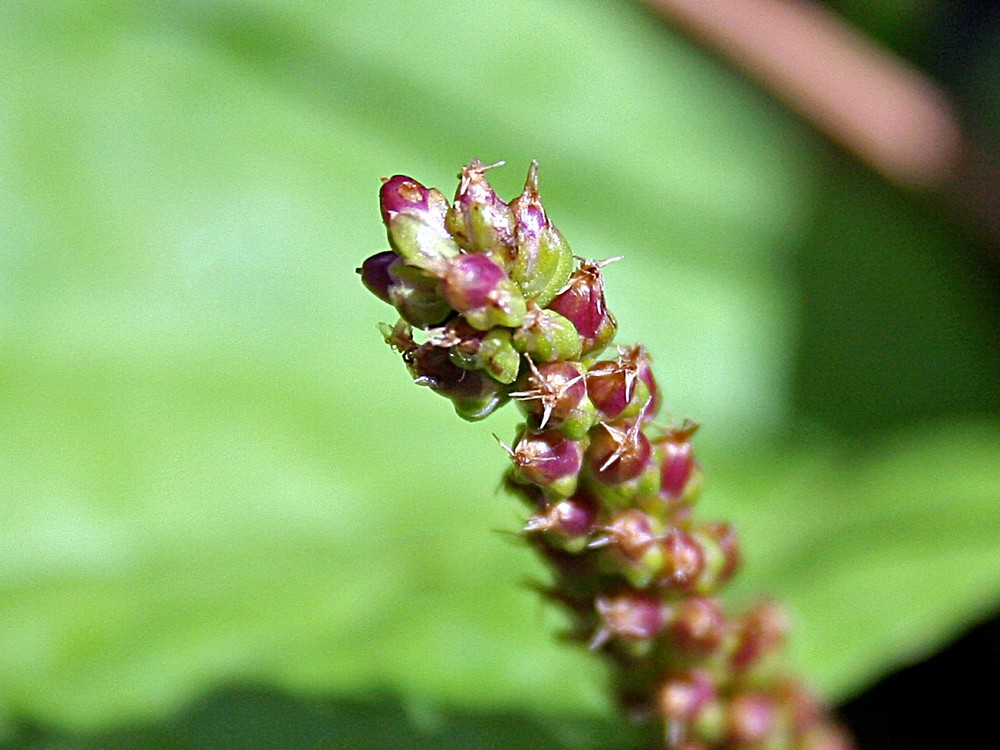
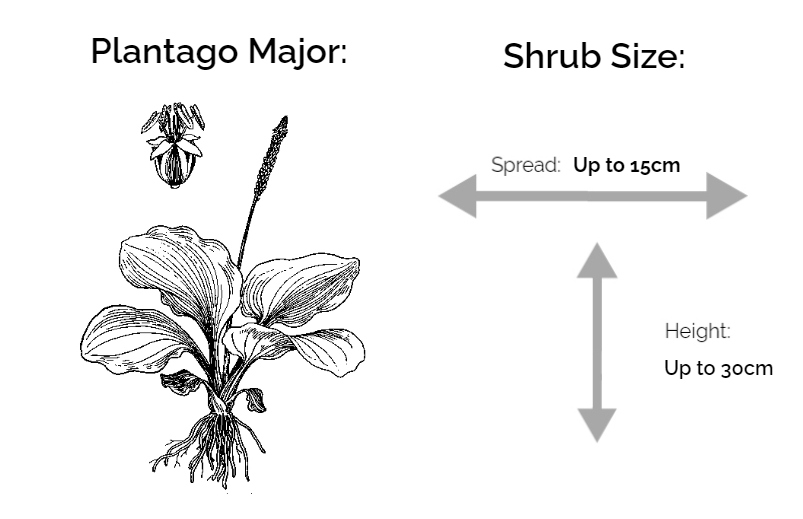
Identification:
Common Plantain is a herbaceous plant with no stem, the vein-streaked leaves grow very close to ground level. From June to October, Plantago major produces green flowers that grow upwards, each flower produces a capsule that contains a tiny fruit.
Medicinal Properties:
Hemostatic, scaring, diuretic, expectorant, anti-inflammatory, alkalizing, depurative, emollient.
Plantago Major boasts a high content of vitamin A and C, their leaves are a natural antidote to poison ivy. Leaf infusion can be used to treat hemorrhoids. Fresh common plantain leaves applied on wounds will help draw out the pus, and soaked seeds can be eaten for a laxative effect.
Where to find Common Plantain:
Common Plantain is often seen as a weed, you have most likely seen it grow through gravel in sidewalk cracks and near homes. In the wild its often found in abandoned and overgrown fields where vegetation is low-lying.
Red Clover (Trifolium pratense)
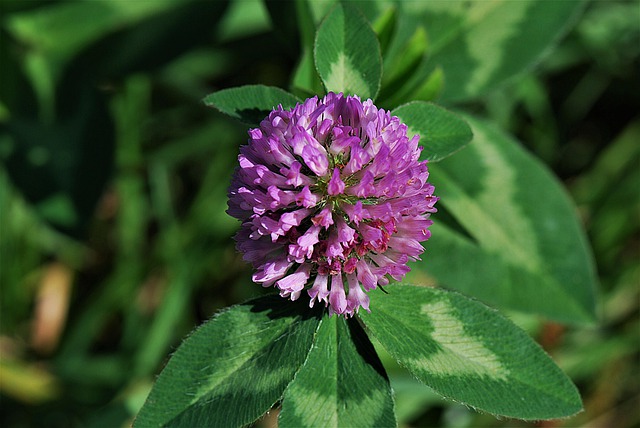
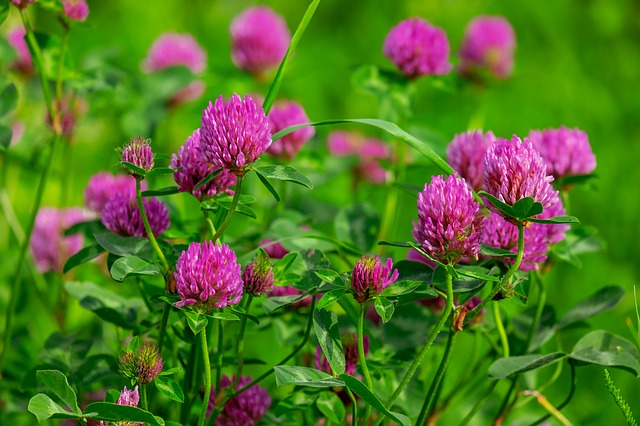
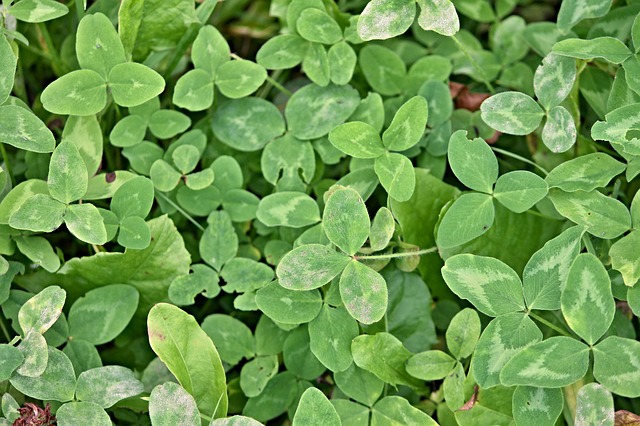
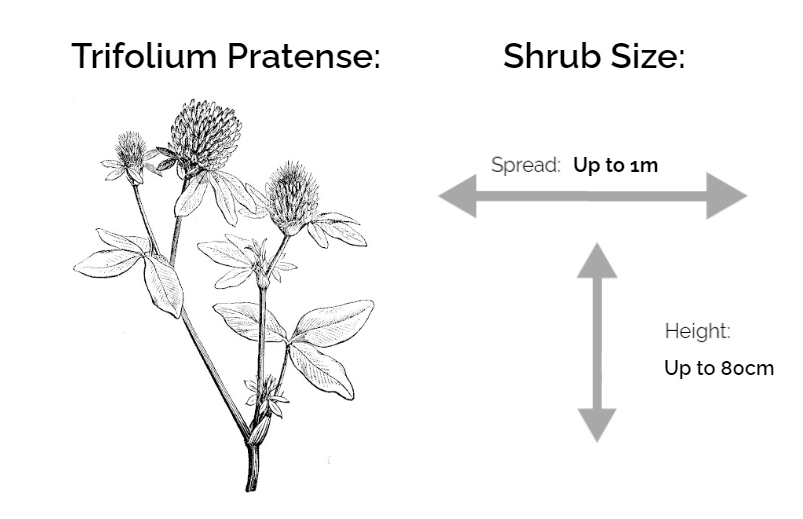
Identification:
Red clover is a herbaceous plant with a soft stem, the oval-shaped leaves sprout in bunches of three that have a white crescent adorning them. Trifolium pratense blooms from June to September, where you can observe sprouting some pink round balls that are composed of many little flowers.
Medicinal Properties:
Depurative, estrogenic, alkalizing, nutritive, mineralizing, antispasmodic, expectorant.
Red clover is used to make ointments that counter cutaneous ulcers, in tea, it can help relieve menopause symptoms.
Young red clover leaves are delicious and nutritive in a salad or can be eaten as chips along with bacon. The protein-rich flowers are used to make jams, honey, and red clover wine.
Where to find Red Clover:
Red clover often grows in colonies in backyards, abandoned fields, roadsides, parks, and forest edges. It grows in a variety of soils, from well-drained to poorly drained slightly acidic soils, while it likes to grow in full sun, Trifolium pratense is also shade tolerant.
Canada Goldenrod (Solidago canadensis)
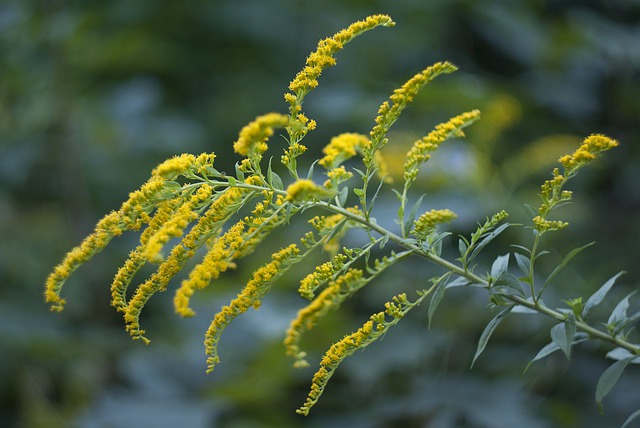
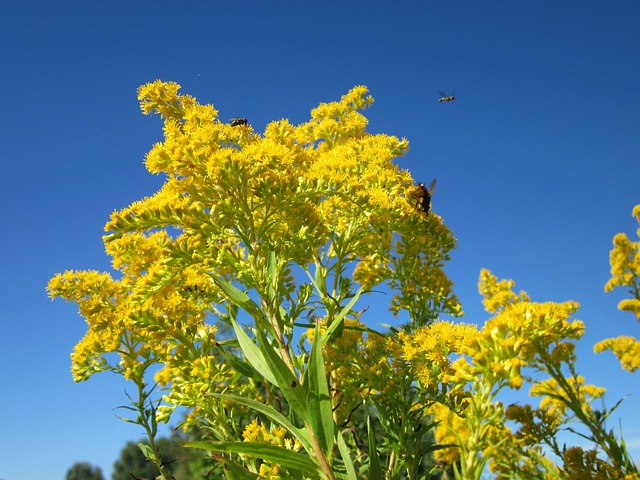
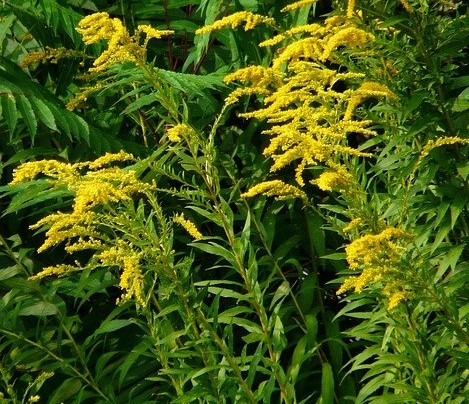
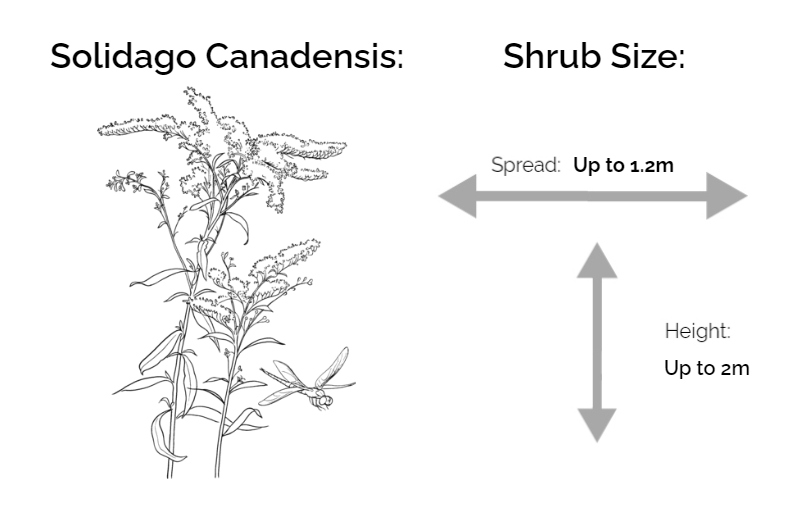
Identification:
Canada Goldenrod is a herbaceous plant that can grow to a great size, with a strong stem that shoots up and spreads at the top. Solidago canadensis has simple bladed leaves, you can see its beautiful golden flowers blooming from July to October. It is a pollen-rich plant that attracts all sorts of insect life.
Medicinal Properties:
Antioxidant, diuretic, astringent, hepatic & renal drainer.
Canada goldenrod essential oil mixed with olive oil is excellent massage oil. Infusing a handful of flower bunches into two liters of water, then added to bathwater can help remove vaginal yeast infections. The plant infused into tea can treat hypertension.
Ground-up flowers are great to top cakes and muffins, as well as soups and fish.
Where to find Canada Goldenrod:
Canada goldenrod is a boreal forest medicinal plant that likes to grow in full sun in recently cleared forests, abandoned fields, and countryside backyards. Dry fields, meadows, forest edges, fence rows, and swamps are all good areas to look for Solidago canadensis.
Violet (Viola L.)
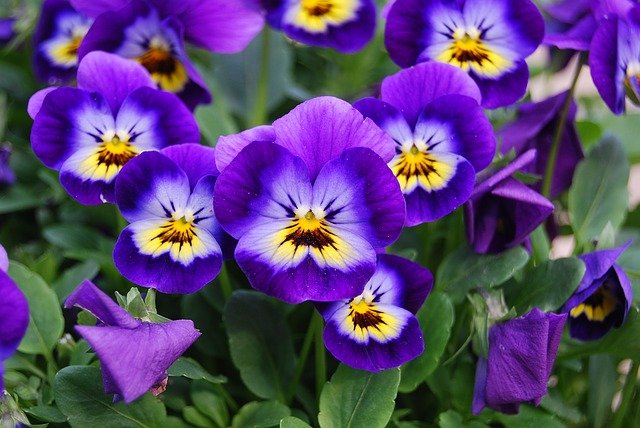
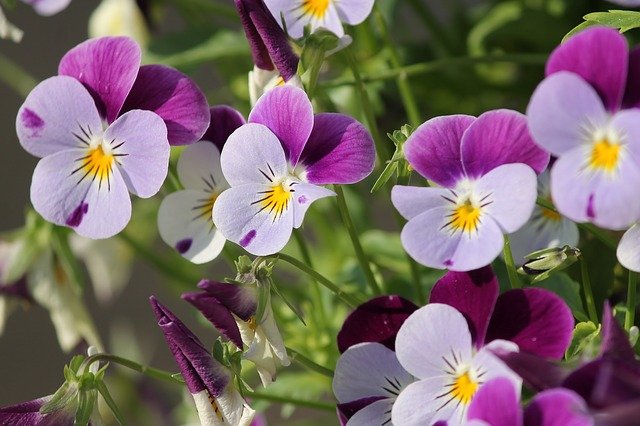
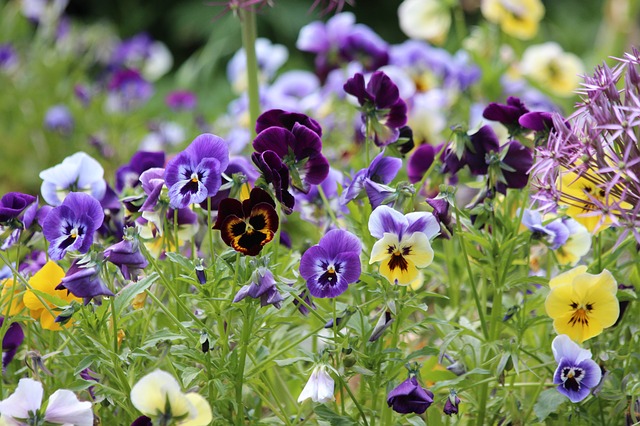
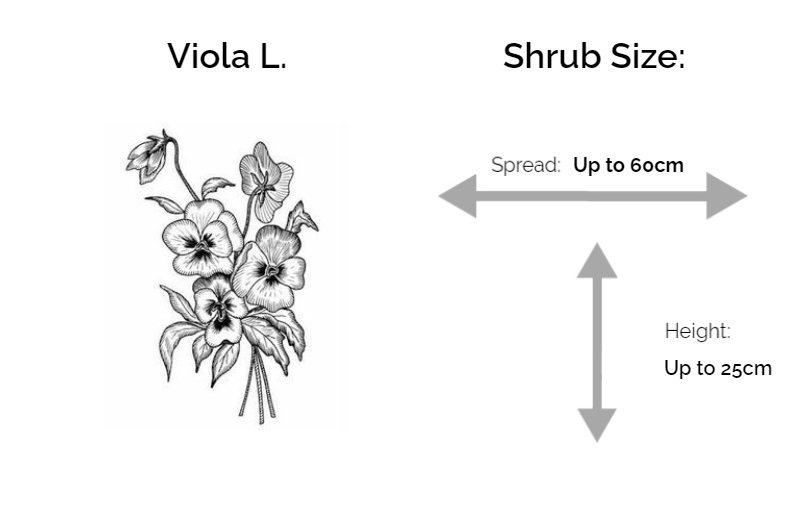
Identification:
Viola is a small herbaceous plant that likes to spread by rhizome. Viola has many subspecies with slightly different characteristics, leaves can either sprout from the ground of the stems. Violets can bloom as early as April and all the way until early Autumn. Their beautiful flowers range from white, yellow, and violet.
Medicinal Properties:
Calming, expectorant, sudorific, emollient, febrifuge, depurative, antitussive.
While violet flowers and burgeons are edible, especially in salads, they also have medicinal properties.
Other than in tea, you can use the leaves and flowers to transform them into many things such as poultices, syrup, honey, vinegar, salves, and essential oils. One of the best uses for viola tea is to treat hacking coughs. Its effects can also be used along with other treatments to fight cancers.
Where to find Violets:
Violets have been introduced throughout North America from Europe, you will often see them in gardens for their beauty, but in the wild, they like to grow on moist forest floors. They often grow under shade, in medium well-drained soils.
Sweetfern (Comptonia peregrina)
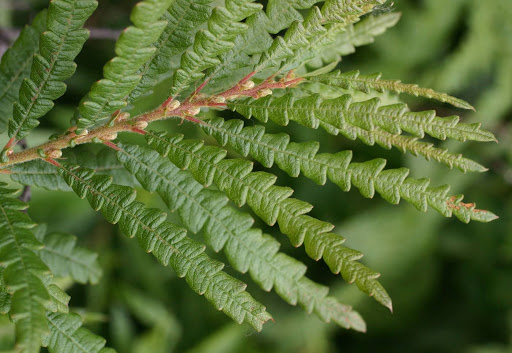
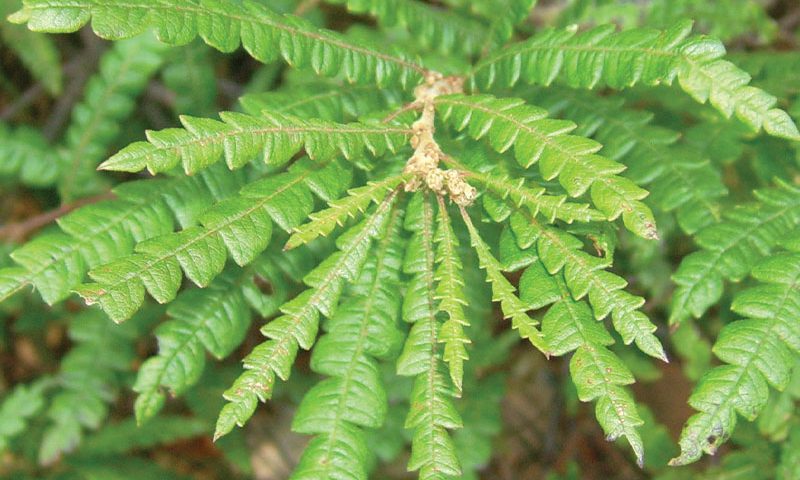
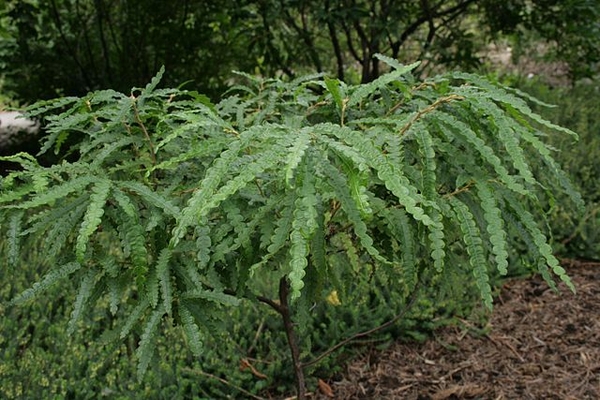

Identification:
Comptonia peregrina is a very fragrant bushy plant. During spring, sweetfern produces bundles of reddish-green flowers that shoot up and then hang down with gravity. On the branches, you can also observe spiky green balls, which contain seeds inside.
Medicinal Properties:
Sweetfern is very rich in antioxidants, which give it great properties as anti-inflammatory herb.
Native Americans often used sweetfern leaves, roots, fruit, and bark to make tea. Comptonia peregrina tea is known to boost energy, to treat colds, urinary tract, and intestine infections.
Where to find Sweetfern:
Sweetfern is a boreal forest medicinal plant that grows throughout eastern North America, as north as Quebec and as south as Georgia. They grow on sandy soils, often sprouting in huge numbers after wildfires. Look for it in areas where trees have fallen and brought light to the forest floor. Open meadows, pine barrens, and river edges are prime spots.
For more info, check out: How to Identify & Propagate Sweetfern.
Sheep Laurel (Kalmia angustifolia)
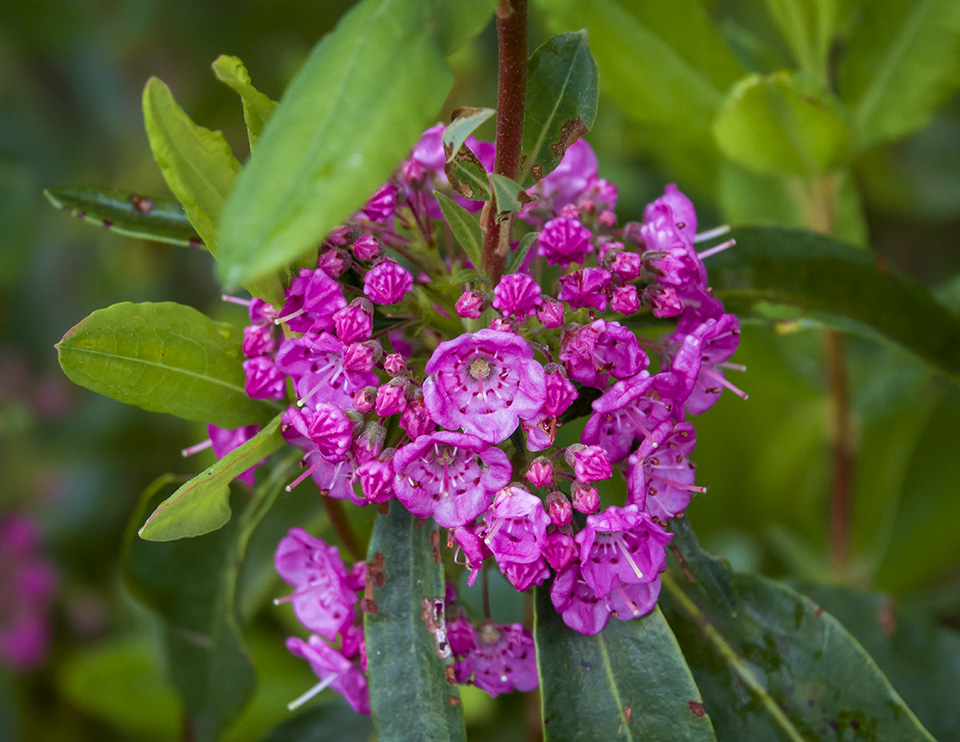
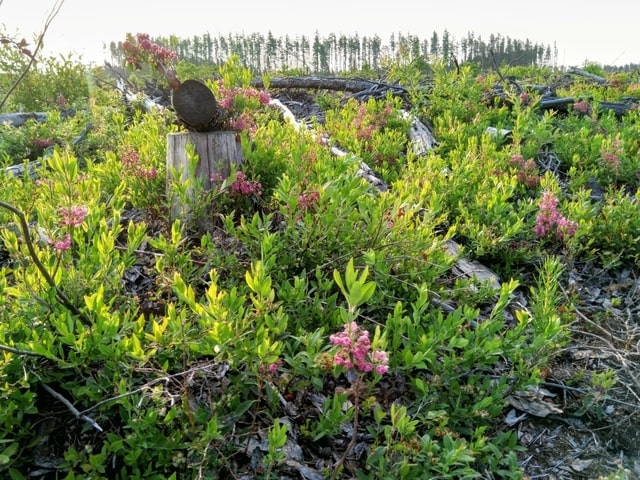
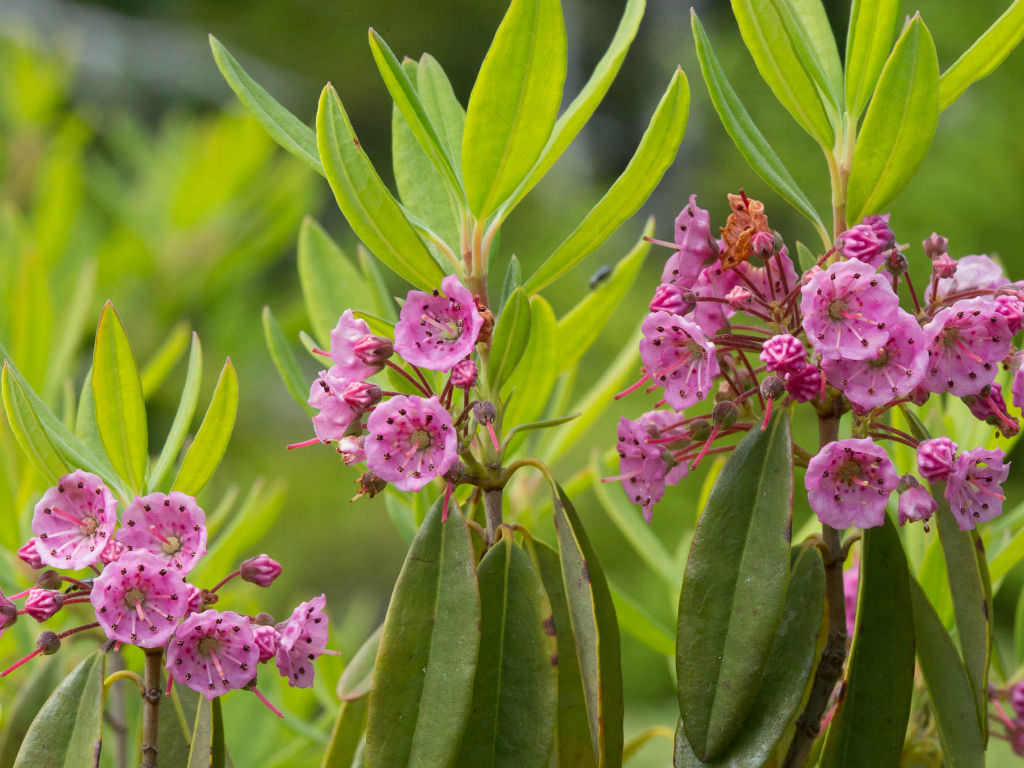
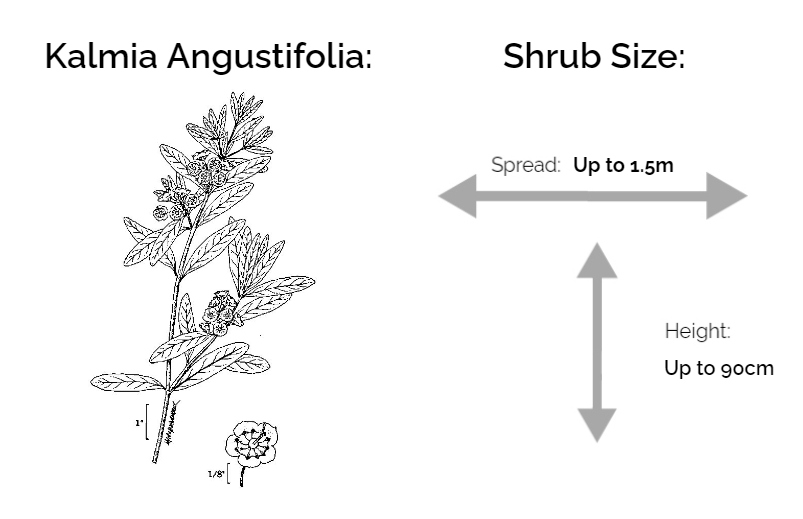
Identification:
Kalmia is a bushy plant with flexible stems and small oval-shaped leaves that are often grouped in threes. You can observe small bright pink flowers blooming on sheep laurel from June to early Autumn.
Medicinal Properties:
Warning: Sheep laurel is considered toxic in high doses. It has been reported that the effects range from drunkenness to hallucinations.
In low doses, it’s anti-inflammatory. Leaves used in a compress, tea, or tonic is used to treat headaches. You can add kalmia leaves to a steam bath to relieve congestion. In infusion, it treats diarrhea, stomach, and intestine problems.
Mixed with Labrador tea, kalmia angustifolia can reduce fever and relieve chills. The combination in compress is great to treat rheumatisms, swelling, bone, and muscle aches.
Where to find Sheep Laurel:
Sheep laurel populates the forest floor, often near jack pine colonies and sphagnum bogs. I’ve seen it grow in open sun in disturbed lands, like a recently cleared forest. It’s found growing in eastern North America, as far north as Quebec and as south as Virginia.
Wild Rose (Rosa acicularis)
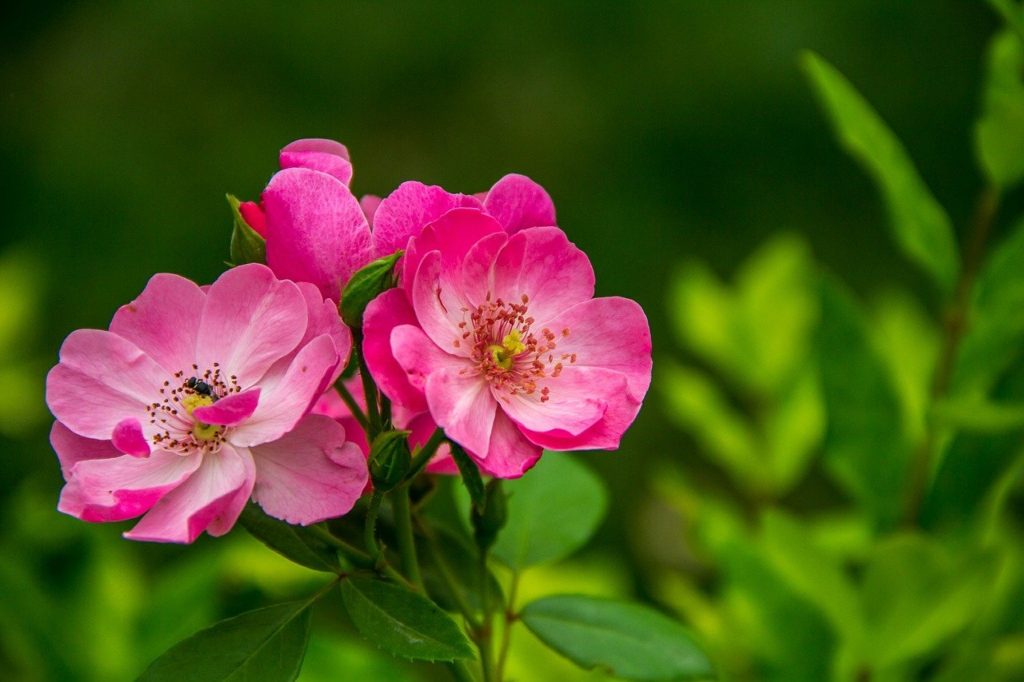
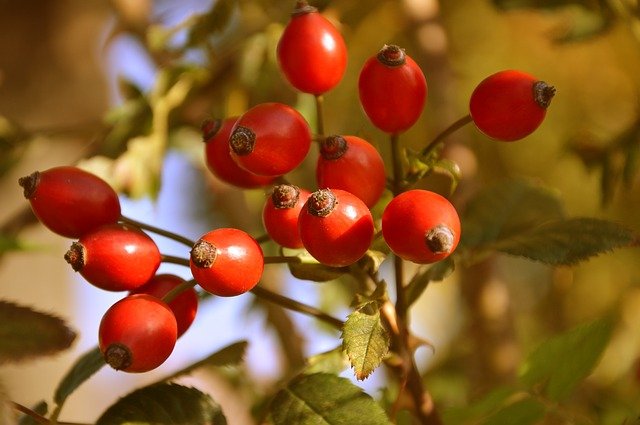
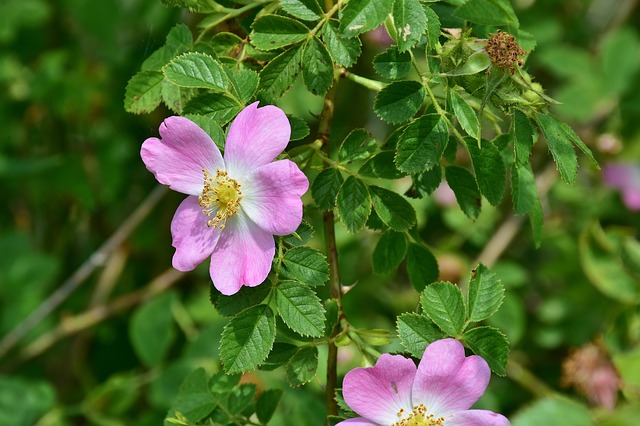
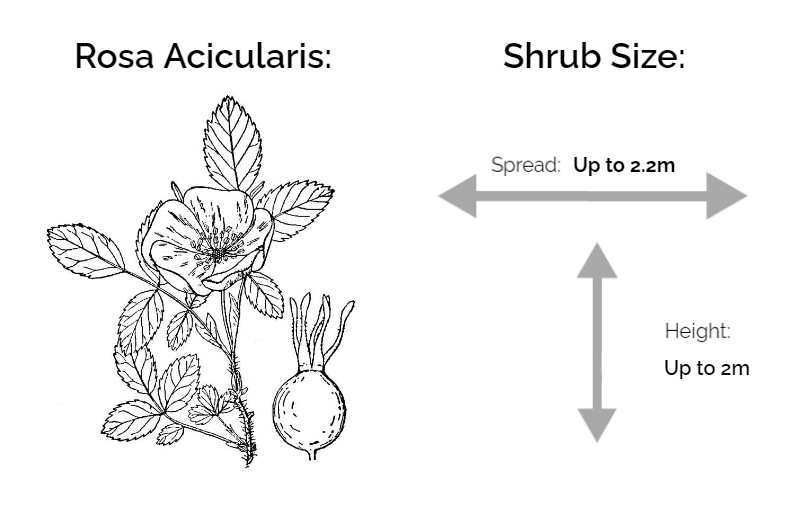
Identification:
Wild rose is a bushy plant with strong stems that are covered in spines and spikes. The leaves are alternate but often grow as opposed. Rosa acicularis usually bloom from spring to early summer, they create beautiful pink 5-petaled flowers, then afterward the flowers turn into rose hips (red fruit) for the rest of the season.
For more info, check out: How to Identify & Propagate Wild Rose.
Medicinal Properties:
Rose leaves & flowers: tonic, laxative, scarring.
Rose hips (fruit): Astringent, homeostatic, diuretic, depurative, tonic, anti-anemic, anti-scorbutic, vermifuge.
Rose has been closely intertwined with human history, the fragrance itself is one of the most pleasant, it has been used in cultures for protection and ritual cleansing.
Rose hips are filled with vitamins, and the carotenes found inside the hips have been linked to cancer prevention. Their high concentration of vitamin C makes them especially useful to fight scurvy and the common cold. Rosehip is best made as tea but can also be taken in syrup or capsules.
Flowers & leaves as a compress is a powerful medicine to reduce pain, heat, and inflammation in wounds such as abrasions, rashes, bites, and stings.
How to find Wild Roses:
Wild rose grows throughout a large range of North America, all over Canada, and as south in the U.S. as New Mexico. It’s often found growing in the cities near homes for its beautiful flowers and scent. In the wild, look for them in woodland and field edges, in farms and disturbed soil.
Serviceberry (Amelanchier)
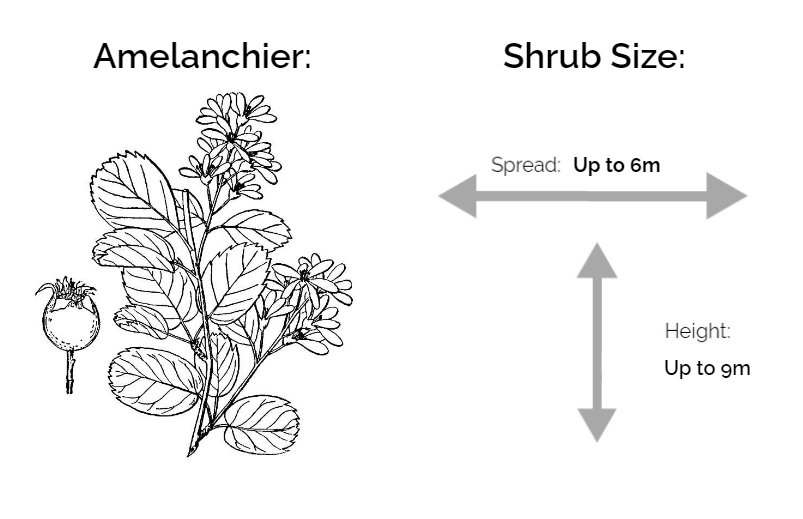
Identification:
Amelanchier is a fairly large bushy plant that can sometimes grow straight up like a tree. They have simple alternate-toothed leaves and smooth gray bark. Serviceberry blooms with small long petaled white flowers from March to July.
Because the whole bush becomes covered with these tiny beautiful flowers, they are often used as landscaping shrubs. The shrub also produces small berries that are very similar to blueberries, they range from red to purple in color and have small hairs at the extremities.
Medicinal Properties:
Amelanchier berry juice is used to treat stomach problems. You can make essential oil from the fruits to use as droplets to treat ear pains.
The sapwood is a pain reliever, a great use is to grind up bark and apply the mixture to relieve toothaches.
How to find Serviceberry:
Serviceberry grows all over North America. It does well in open areas, often in mixed forests or sometimes throughout conifers. They are understory trees found growing in swamps, lowlands, and thickets.
Check out our guide to grow them yourself: How to Propagate Serviceberry.
Blueberry (Vaccinium L.)
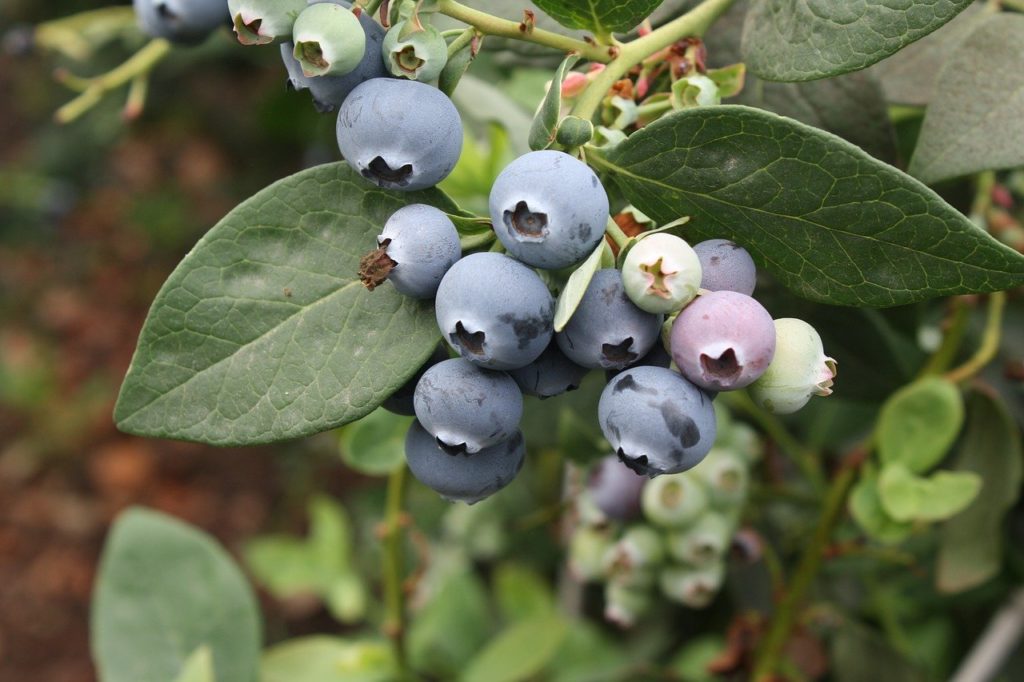
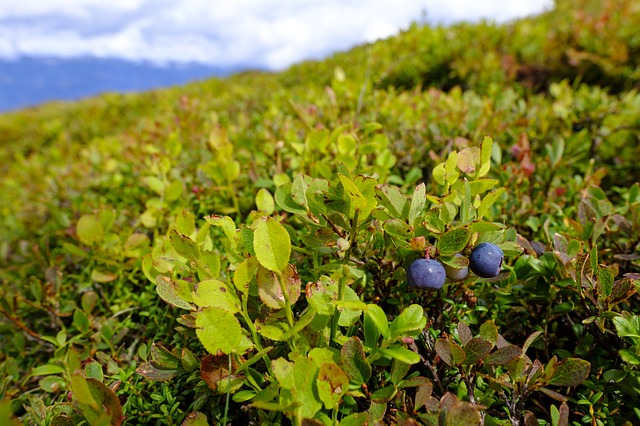
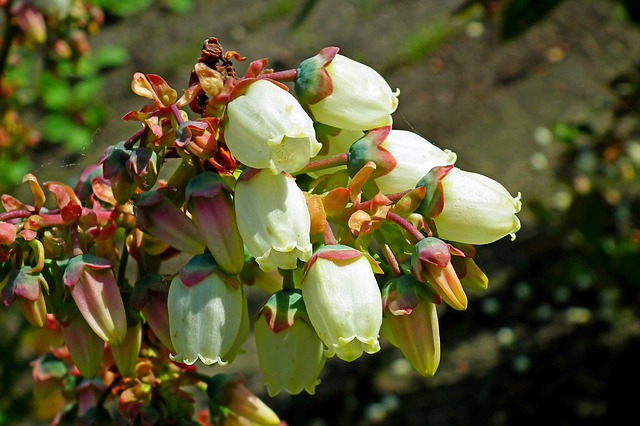
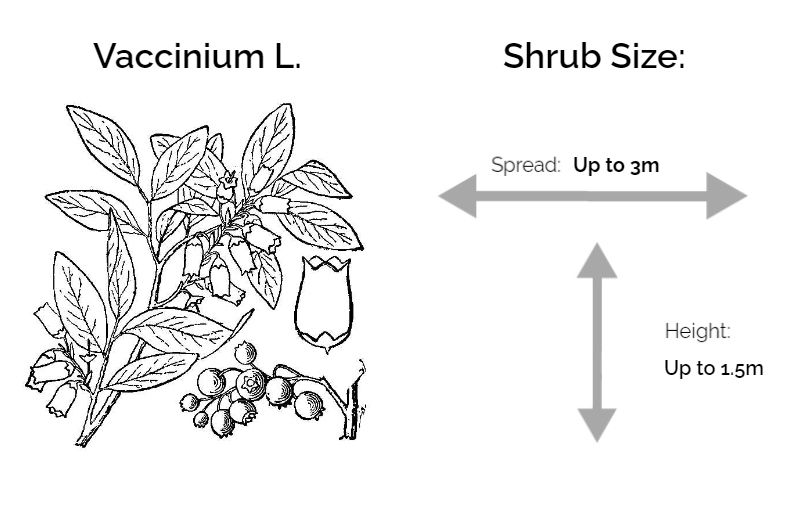
Identification:
Blueberry is a bushy boreal forest medicinal plant that grows simple oval-shaped leaves. In spring to early summer, vaccinium creates numerous bell-shaped white flowers which in turn change into berries. The fruits range from green when unripe to light blue and dark blue when ready for harvest.
Medicinal Properties:
Antiseptic, astringent, hypoglycemic.
Blueberry has a famous reputation as a superfood, mainly for its rich amounts of antioxidants. The anthocyanidins within are said to be anti-cancerous. The fruits are known to kill microbes in the urinary tract.
Blueberry roots, where the antioxidants are formed, and the leaves, which are very rich in manganese (an important nutrient for brain function), can both be infused into a tea.
Blueberry tea has insulin-like properties, it helps regulate glucose levels. It can also clean the blood and help lower cholesterol levels.
How to find Blueberries:
Vaccinium likes to grow in rocky landscapes in full sun, it’s often found growing in disturbed land like recently cleared forests. It’s also an understory shrub in mixed forests, you are very likely to find blueberries in forest areas that you know are sandy. Blueberries grow all over Canada and the U.S.
Check out our guide to grow them yourself: How to Propagate Blueberries.
Beaked Hazelnut (Corylus cornuta)
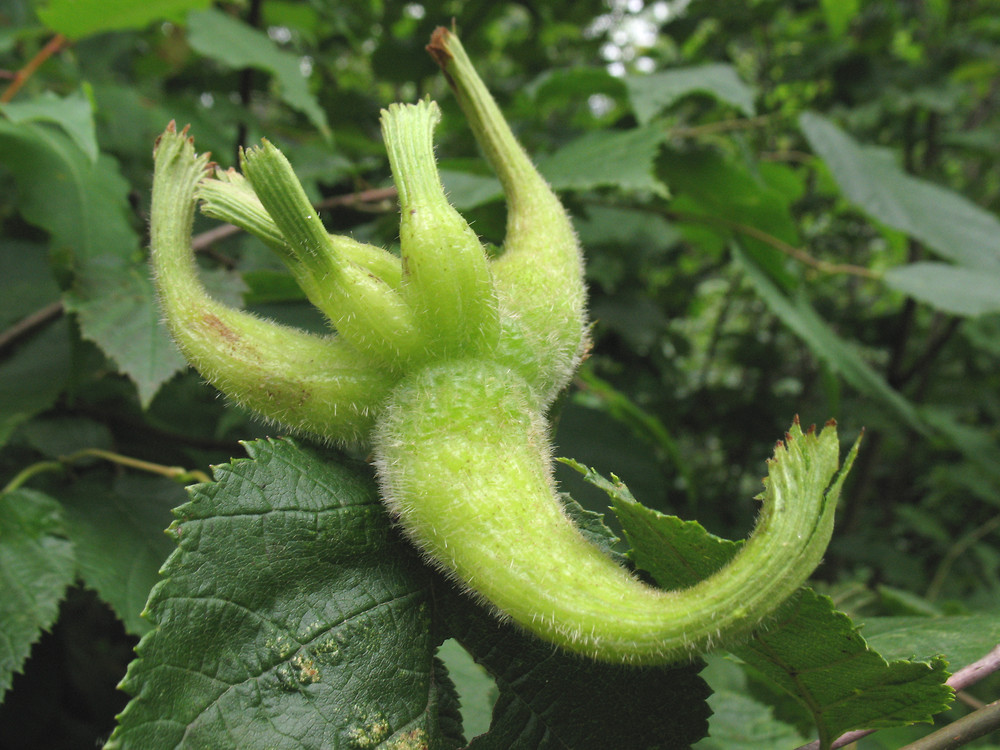
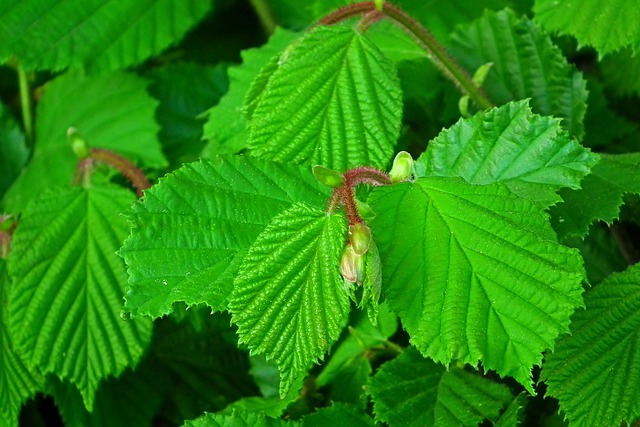
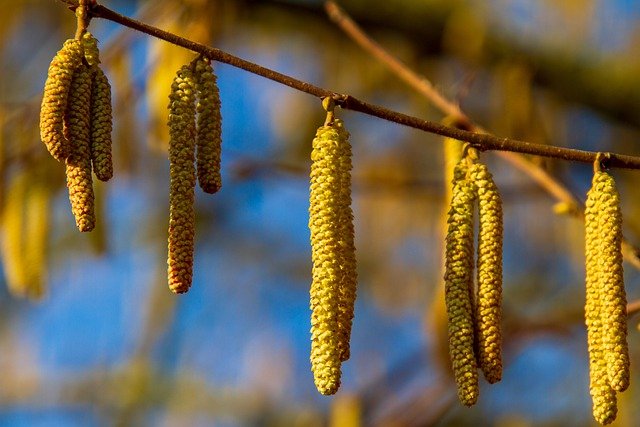
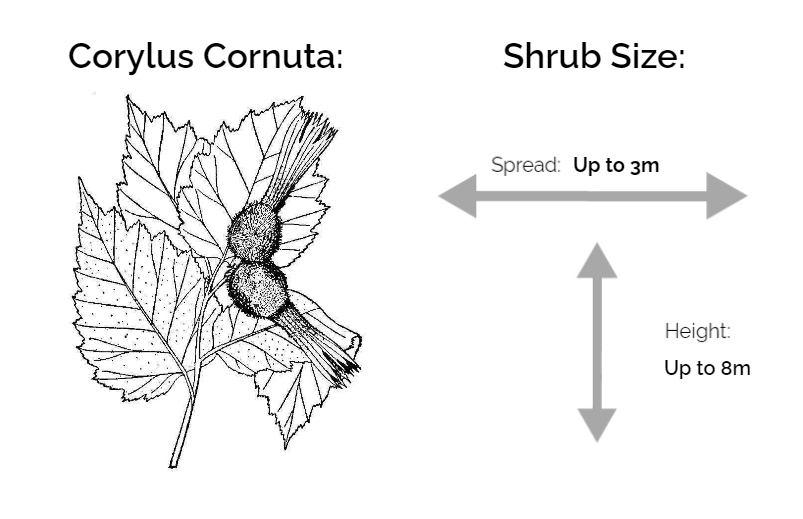
Identification:
Beaky hazelnut is a bushy plant with flexible stems, the leaves are simple, alternate, and doubly-toothed. The plant produces male buds that have a yellowy-green flower, while the female buds come out as small, red pointy flowers. Corylus cornuta produces hazelnut, which is covered in a green envelope with small hairs on them.
Medicinal Properties:
Beaked hazelnut bark treats the common cold and fever. It has antioxidant properties similar to vitamin C.
Native Americans used branches to make necklaces that help calm teething babies. In a compress, the bark was used to treat ulcers and tumors. A decoction of the branch relieved heart, intestine, and eye troubles. The root was used to make blue pigment.
How to find Beaked Hazelnut:
Corylus cornuta is found growing in deciduous forests, in moist, well-drained sites. Look for them near forest edges, forest clearing, thickets, and river banks. It grows all over Canada and as south in the U.S. as Georgia.
Conclusion
We can live our whole life eating well, exercising, and doing everything we need to do to be healthy, but sometimes it seems life can throw us a curveball and bring us medical problems.
Modern medicine is a blessing and we are lucky to have it in our era. Thanks to it, humans today live longer than ever before. But it’s not the only option when it comes to medicine.
Boreal Forest Medicinal Plants offer Alternative Medicine
While modern medicine offers many solutions and still has so much potential in the future, it’s still young. We can’t forget that before modern medicine existed, we had traditional medicine; cures to ailments that were found by our ancestors and passed down through the generations.
Those are thousands of years of experimenting, we can’t just shrug off the merit of traditional medicine.
Even today, there are many herbs known to traditional medicine that haven’t been given a proper trial through modern medicine, which means there are still so many untapped opportunities.
In my opinion, when modern medicine does not provide a solution or does not give the results we hope for, there’s no reason not to try traditional medicine.
Getting a disease or medical problem is often out of our control, in fact, it’s part of life. You can’t live your whole life without ever having a health problem. But thankfully, mother nature has fabricated all sorts of cures to the problems we encounter.
Learn What Mother Nature Can Offer
Learning about the boreal forest medicinal plants, for those who live there, gives you some priceless knowledge. It’s a skill that allows you to connect with nature on a primal level, and it changes forever how you see the forest.
There’s always going to be a moment in your life where you can use the information in this guide, maybe to treat yourselves or the ones you love. It can help you when you are out in the forest or even when you are cozy at home.
I hope that anyone who appreciates nature can give a try at some of these boreal forest medicinal plants, maybe they will fall in love with them as I have.
In my final words, I want to remind anyone who’s picking medicinal plants to do it sustainably. Never take an entire patch, only take a small portion then move on to the next patch, and if you can, plant the seeds.
Last but not least, take a moment to thank mother nature for the bounty that she has offered you.
The boreal forest is precious and its medicinal plants should be appreciated, happy pickings!
If you’re interested in more medicinal plants, here are a few you might find near your area:

Did you enjoy this guide? You might also enjoy our boreal forest mushroom identification guide.

